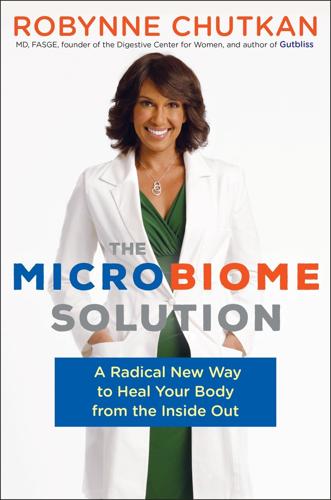
The Microbiome Solution
by
Robynne Chutkan M.D.
Published 5 Aug 2015
Biopsies taken during an upper endoscopy as part of the evaluation revealed the presence of Helicobacter pylori bacteria, a much-maligned inhabitant of the stomach. Under certain circumstances, H. pylori can be associated with ulcers or stomach cancer, but it’s been a longtime resident of the stomach—around for millennia and present in half the world’s population. We’re just now realizing, thanks to the work of scientists such as Dr. Martin Blaser, that for many people, H. pylori has a protective effect, and its unnecessary eradication can lead to even more dangerous conditions such as esophageal inflammation and even cancer. In Lucia’s case, Helicobacter pylori was definitely not the cause of her nausea, and after two rounds of treatment, each lasting two weeks and consisting of three different antibiotics, her nausea was worse rather than better, and she started to develop reflux symptoms that she’d never had before—a known complication of H. pylori eradication in some people.
…
TABLE 2–1 • Predominant Bacteria Present in Humans Location Bacteria Skin Staphylococci, Corynebacteria Nose Staphylococci, Corynebacteria Mouth Streptococci, Lactobacilli Throat Streptococci, Neisseria Stomach Helicobacter pylori Small intestine Bifidobacteria, Enterococci Colon Bacteroides, Enterococci, Clostridia Urinary tract Staphylococci, Corynebacteria Vagina Lactic acid bacteria An enterotype is a classification based on ecosystems in the gut, and a way to stratify people based on the relative abundance of different species.
…
I’ll go into more detail about the ideal mix of nutrients needed to optimize your microbiome and maintain a healthy weight in Chapter 9. Is Our Super-sanitized Lifestyle Making Us Fat? It may seem hard to believe, but obesity is one of the consequences of our super-sanitized lifestyle. H. PYLORI Less than 10 percent of school-age children now harbor Helicobacter pylori, a number that’s decreased dramatically from decades ago as a result of widespread use of antibiotics. In later life, H. pylori may be associated with stomach ulcers and other problems, but in childhood it seems to have a more protective effect, including keeping ghrelin in check; ghrelin is the “hunger hormone” produced in the gastrointestinal (GI) tract that makes us want to eat.
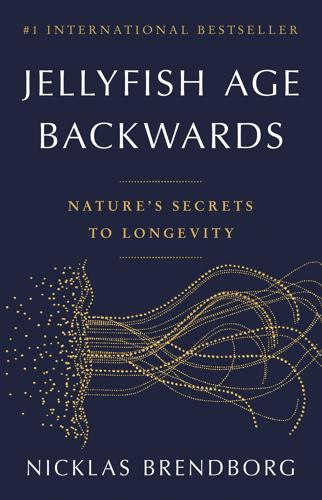
Jellyfish Age Backwards: Nature's Secrets to Longevity
by
Nicklas Brendborg
Published 17 Jan 2023
Once upon a time, our understanding of how microbes cause disease went something like this: you get infected with a specific microbe, for instance a bacterium or a virus, and then you develop a corresponding disease. This was one of the reasons Robin Warren and Barry Marshall met resistance. They were working to prove that the bacterium Helicobacter pylori causes peptic ulcers and stomach cancer. But some people carry Helicobacter pylori in their stomachs with no problems. Nevertheless, the bacterium is the cause, and its eradication is a treatment. It simply turns out that the relationship between us and microbes is a lot more complicated than we once thought. Back in the day, we used to think humans were mostly sterile.
…
And, after careful documentation, Marshall used antibiotics to eradicate the infection and cure himself. The daring self-experiment was enough to finally turn the tide in the Australians’ favour. It would be another ten years before the last resistance was swept off the field (and the patent on antacids expired). However, the spiral bacterium, Helicobacter pylori, was gradually recognised as the primary cause of peptic ulcers, and also as the cause of most cases of stomach cancer. Victory was sweet for the stubborn Australians. In 2005, Robin Warren and Barry Marshall were awarded the greatest honour in science, the Nobel Prize, for their discovery.
…
It could be that this particular genetic variant simply makes people worse at fighting herpes infections. Critics of the microbial theory of Alzheimer’s point to the fact that some people are infected with herpes virus but don’t develop Alzheimer’s. But, as we’ve learned, this is quite normal. Some people are infected with Helicobacter pylori and don’t get peptic ulcers. Some people are infected with Epstein-Barr virus and don’t develop multiple sclerosis. In both cases, the disease happens as a by-product of infection – the pathogen is not trying to directly induce it. That’s probably the reason why pathogens can cause disease in some people while sparing others.
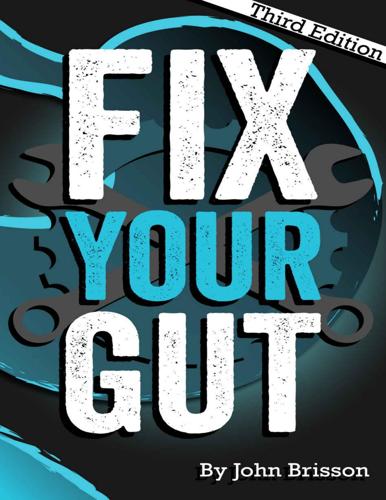
Fix Your Gut: The Definitive Guide to Digestive Disorders
by
John Brisson
Published 12 Apr 2014
Listeriosis is treated with antibiotic therapy and requires hospitalizations ranging from two – six weeks depending on the severity of the disease and if it spread to the brain and spinal cord. Listeria monocytogenes produces biofilms; therefore, anti-biofilm protocols (Ch. 9) combined with antibiotic therapy may improve recovery outcomes. Helicobacter pylori Helicobacter pylori are Gram-negative bacteria that can be found residing in the human stomach. H. pylori infections are a common cause of stomach ulcers, gastritis, GERD, and stomach cancer. Symptoms of an H. pylori infection include gastritis, abdominal pain, nausea, bloating, GERD, and occasional vomiting in a severe infection.
…
_r=0, Accessed April 28, 2014. http://www.sciencedaily.com/releases/2008/10/081006092511.htm, Accessed April 28, 2014. Blaser MJ. Helicobacter pylori and gastric diseases. BMJ. 1998;316(7143):1507-10. http://www.ncbi.nlm.nih.gov/pmc/articles/PMC1113159/ H. pylori Supplements Balch, Phyllis. Prescription for Herbal Healing, Avery Publishing, 2012. http://www.anaturalhealingcenter.com/documents/Thorne/articles/helicobacter_p Accessed April 28, 2014. http://www.meschinohealth.com/ArticleDirectory/Oil_Of_Oregano_Natures_Ant Fungal_Supplement, Accessed April 28, 2014. Dabos KJ, Sfika E, Vlatta LJ, Giannikopoulos G. The effect of mastic gum on Helicobacter pylori: a randomized pilot study. Phytomedicine. 2010;17(3-4):296-9. http://www.ncbi.nlm.nih.gov/pubmed/19879118 Zhang L, Ma J, Pan K, Go VL, Chen J, You WC.
…
Phytomedicine. 2010;17(3-4):296-9. http://www.ncbi.nlm.nih.gov/pubmed/19879118 Zhang L, Ma J, Pan K, Go VL, Chen J, You WC. Efficacy of cranberry juice on Helicobacter pylori infection: a double-blind, randomized placebo-controlled trial. Helicobacter. 2005;10(2):13945. http://www.ncbi.nlm.nih.gov/pubmed/15810945 Nzeako BC, Al-namaani F. The antibacterial activity of honey on Helicobacter pylori. Sultan Qaboos Univ Med J. 2006;6(2):71-6. http://www.ncbi.nlm.nih.gov/pmc/articles/PMC3074916/ Gastritis / Ulcers General Information Beers, Mark. The Merck Manual, Merck Research Laboratories, 2006. http://digestive.niddk.nih.gov/ddiseases/pubs/hpylori/, Accessed April 28, 2014.

Save Your Gallbladder and What to Do if You've Already Lost It
by
Sandra Cabot
and
Margaret Jasinska
Published 2 Sep 2013
Inflammatory bowel disease (Crohn’s disease and ulcerative colitis) Infection in the stomach with the bacteria Helicobacter pylori raises the risk of cholecystitis. (inflammation of the gallbladder)5 The presence of this bacteria also seems to be associated with cancer of the gallbladder or biliary tract. 6Helicobacter pylori is a very common bacterial infection that raises the risk of stomach ulcers and stomach cancer. It is important not to have an overgrowth of this bacteria in your digestive system because it creates chronic inflammation, which can eventually lead to serious disease. The most effective way to eradicate Helicobacter pylori is to improve the health and function of your digestive system.
…
Hepatitis Pancreatitis Fatty liver with liver congestion Cancer of an abdominal organ - such as pancreatic cancer, intestinal cancer, liver cancer, stomach cancer or cancer of the gallbladder or biliary ducts. Autoimmune disease - such as autoimmune hepatitis, sclerosing cholangitis or primary biliary cirrhosis Stomach inflammation known as gastritis – this may be caused by infection with bacteria known as helicobacter pylori; these bacteria live in the stomach lining and flare up if you eat excess sugar or excess carbohydrate Reflux of acid from the stomach back into the esophagus Food allergies Gluten intolerance Liver cysts caused by sluggish bile flow (these are often small) Severe emotional stress causing spasm in the smooth muscle in the gut Adverse drug reactions from anti-inflammatory drugs which can upset the liver and stomach Chapter 9 The conventional medical treatment of gallstones The most common medical solution for gallstones is to remove the gallbladder.
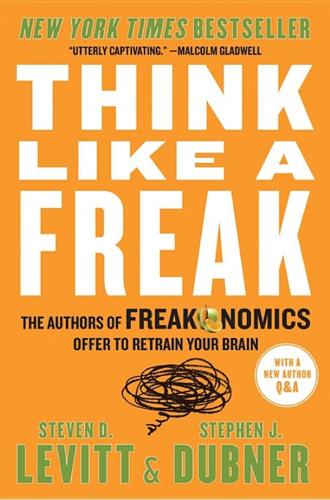
Think Like a Freak
by
Steven D. Levitt
and
Stephen J. Dubner
Published 11 May 2014
Warren’s patients, he tried to culture the squiggly bacteria in the lab. For months, he failed. But after an accident—the culture was left in the incubator three days longer than intended—it finally grew. It wasn’t Campylobacter; it was a previously undiscovered bacteria, henceforth known as Helicobacter pylori. “We cultured it from lots of people after that,” Marshall recalls. “Then we could say, ‘We know which antibiotic kills these bacteria.’ We figured out how they could live in the stomach, and we could play around with it in the test tube, do all kinds of useful experiments. . . . We were not looking for the cause of ulcers.
…
Abdul-Jabbar, Kareem, 173 abortion, legalization of, 40, 69, 93 Abraham, story of, 187 Adam and Eve, story of, 187 adoptions, in Japan, 1n adults: dumbing down, 103 and magic, 102–3 advance-fee fraud, 156 advertising: awards programs as, 46–47 effectiveness of, 36–38 Africa: corruption in, 74 ethnic strife in, 74 independence in, 74 African-Americans, heart disease of, 75, 77 airline deaths, 179, 180 Ally Bank, 26–27 al Qaeda, 28 altruism, 121, 130 Amazon, 130 anecdotes, 181–82 Arai, Kazutoyo “the Rabbit,” 54 Arista Records, 208 Asiana Airlines, 179 attention, 102, 183 authority-figure relationships, 125 avatars, 63 Ayalon Institute, The, 152 bacteria: and chickens, 80 fecal transplants, 84–86 gut, healthy, 84–85 Helicobacter pylori, 80–83 hereditary, 83 in human body, 83 spread of, 28 transplantation of, 84–86 and ulcers, 80–86, 95 bank accounts: and life insurance, 163–65 prize-linked savings (PLS), 98–99 savings rates, 97–99 and terrorists, 161–65 Bathsheba, 187 beliefs, 21 Bertoletti, Patrick “Deep Dish,” 60–61 biases, 205 absent in children, 87–88 and opinions, 10, 172 right vs. wrong, 31–32 status-quo, 206 Bible, stories in, 185–88 big thinkers, 89 blind spots, 172 blockbuster drugs, 79 Bloomberg, Michael, 192–93 Bohr, Niels, 23 Bolivia, slavery in, 74 Bolt, Usain, 55 Borody, Thomas, 85–86 brain, as critical in sports, 63 brainstorming, 193 bread baking, 34–35 bribes, 105–6 Buffett, Peter, 119–20 bullet factory, Israeli, 152–54 burglar alarms, 158 Byrds, 138 Cain and Abel, story of, 187 California, electricity use in, 112–15 Cameron, David, 11–16 Cameron, Ivan, 14–15 Camping, Harold, 30 Campylobacter, 80 cancer, false positives, 158 carbon credits, 131–33 Caribbean blacks, 77 cash bounties, 133 causality and correlation, 8–9 cause and effect: in advertising, 36–38 in economics, 26–27 measuring, 26–27, 35, 39 obvious cause, 65 root causes, 66–70, 82–83, 85 Challenger, 197–98 change, bringing about, 90 charity, 117–25 conscience laundering via, 120 fund-raising success, 122 Italian philanthropy, 73 “once-and-done,” 121–24, 130 Operation Smile, 118–19 raising money for, 99–100 relationship with donor, 125–36 Smile Train, 119–24, 130 social-gaming sites for, 100 social pressure in, 121 chatbots, 160–61 Chekhov, Anton, 188 Chestnut, Joey “Jaws,” 60 chickens, and bacteria, 80 children: bribing, 105–6, 130 cash for grades, 109–10 generating ideas, 88 hard to fool, 102–3 having fun, 96, 100 and magic, 101–4 plastic surgery for, 117–24 preconceptions absent in, 87–88 questions answered by, 19–20 questions asked by, 87 reading books, 104, 110 thinking like, 87, 92, 95, 100 in traffic accidents, 178 vision problems of, 91–92 writing for, 104 China: diplomatic relationship with, 126–27 pollution in, 132 store opening in, 196–97 Chiyonofuji “the Wolf,” 52 Churchill, Winston, 189–90, 210 Cialdini, Robert: and California energy study, 112, 113 and Petrified Forest study, 115–16 civic institutions, trust in, 73 civil-rights lawsuits, 40 Clash, The, 208 climate change, 168–71 cobra effect, 133 Cold War, 126 collaborative relationships, 125, 130, 134 collective good, private benefit vs., 7, 29 college applications, 150 Colombia, slavery in, 74 communal incentive, 7, 29 compass: magnetic reading of, 32 moral, 31–34 complexity, seduced by, 94 Concorde fallacy, 191 concrete costs, focus on, 191 conventional wisdom: blind acceptance of, 8 in education reform, 91 running with the herd, 10, 112–15, 172 Cops, 207 core ideas, 8–9 correlation and causality, 8–9 corruption, 66–67 in post-colonial Africa, 74 crime: and abortion, 69, 93 and the economy, 68, 208 and environment, 69 and gun laws, 68 “present-tense” factors, 68–69 root causes of, 67–70 Cultural Cognition Project (CCP), 168–71 curiosity, 87 customers, incentives of, 128–30 Cutler, David, 76 CXO Advisory Group, 24 data, use of, 9 David, King, 138, 187–88 Davis, Clive, 208 Dawkins, Richard, 191 Deane, Geoff, 193–96 decency, treating others with, 134 decision making: coin flips in, 41, 201–5 economic approach in, 9 Freakonomics Experiments, 200–205 soccer penalty kick, 3–7 tradition-based, 39, 78 devil belief, 21 diplomacy, 126–27 DNA sequencing, 83 dogmatism, 25, 102, 171–72 driverless car, 174–77 drug war, 173 drunk walking, 90–91 Dubner, Stephen J., as quitter, 208–9 eating competitions, 53–61 economic approach, 9 economics: cause and effect in, 26–27 free disposal in, 88 Nobel Prize for, 25n predictions in, 25–27 economy: and crime, 68, 207 and religion, 72–73 education: and poverty, 75 and terrorists, 171 education reform, 50–52, 91 Einstein, Albert, 93 Eisen, Jonathan, 83 embezzlement, corporate, 90 Emperor’s new clothes, 88 Encyclopedia of Ethical Failure, The (Epstein), 184–85 energy conservation, 112–15 “entrepreneurs of error,” 22 environment, and crime, 69 Environmental Investigation Agency (EIA), 132 Epstein, Steve, 184–85 error, entrepreneurs of, 22 ethics, failures in, 184–85 Europe, capitalism in, 73 evanescent field effect, 195 excellence, practice leading to, 96 expectations, 8, 63–64, 67, 102 experiments: artificial nature of, 40–41 and brainstorming, 193 in cause and effect, 35–37, 39 evanescent field effect in, 195 expert knowledge in, 39 extrapolation algorithm in, 24 feedback in, 38–47, 192–93 field, 41 Freakonomics, 200–205 on human beings, 81–82 in Intellectual Ventures, 193–94 laboratory, 40–41 in microbes, 84–86 natural, 40 on potential inventions, 193–96 randomized control trials, 37, 39 in social issues, 39–40 wine quality, 42–47 experts: dart-throwing chimps vs., 24 outside their fields of competence, 27–28 practice to become, 96 predicting the future, 23 in scientific experimentation, 39 seriousness of, 96 extrapolation algorithm, 24 eyeglasses, 92n facial hair, 204 facts, opinion vs., 20 failure: celebrating, 193, 195–96 ethical, 184–85 feedback from, 192–93 forecasting, 198–99 of O-rings, 197, 198 premortem on, 199 as victory, 194 false positives, 158–59, 161, 162 famine, causes of, 66–67 fat, eating, 182–83 fecal transplants, 85–86 feedback: bread baking, 34–35 in experiments, 38–47 gathering, 35–38, 62 and learning, 34–38 voting, 35 financial relationships, 125–26, 130 focus, 102 folklore, 78, 80 food prices, 107–8 fortune-tellers, 31 Franklin, Aretha, 208 Freakonomics, 67, 69 Freakonomics Experiments, 200–205 Freaks: becoming, 211 having fun, 95 free disposal, 88 Fryer, Roland, 75–77 fun, 95–98 and children, 96, 100 of Freaks, 95 in music, 208–9 trickery as, 152 work as, 97, 109, 129, 206–8 writing books, 209 gambling, online, 99–100 game theory, 142–43 gamification, 96 gaming the system, 135 genetic racial differences, 77 Germany: Nazi Party in, 73n religion in, 70–73 schoolteachers in, 180–81 Glaeser, Edward, 22 Glewwe, Paul, 91 global warming, 168–71 goals, unattainable, 199–200 “go fever,” 197 Goldstein, Robin, 43–47 golf, 205–6 Good Samaritan laws, 108 Google, and driverless car, 174–76 Great Recession, 68 greenhouse gases, 131–33 guilt, test of, 144–49 gullibility, 102, 159–61 gun laws, 68 hacking, 177 Haganah, 152 “hammers,” 102 happiness: and marriage, 8–9 and quitting, 201, 204–5 HCFC-22, 132 health care: in Britain, 14–16 causes of illness, 83, 85 and folklore, 78, 80 and poverty, 75 ulcers, 78–86 heart disease, blacks with, 75, 77 hedge funds, and taxes, 70 Helicobacter pylori, 80–83 herd mentality: and conventional wisdom, 10 and incentives, 113–15, 172 Herley, Cormac, 157, 159–61 Herron, Tim “Lumpy,” 206n Hitler, Adolf, 189, 210 homicide rates, falling, 67–69 hot-dog-eating contest, 53–61 Hseih, Tony, 151 human body: as a machine, 95 complexity of, 78, 94–95 Hussein, Saddam, 28 hydrofluorocarbon-23 (HFC-23), 131–33 ideas: cooling-off period for, 88 generating, 87–88 junkyard as source of, 94 sorting bad from good, 88 ideology, 172 “I don’t know”: cost of saying, 29 entrepreneurs of error, 22 extrapolation algorithm, 24 and impulse to investigate, 47–48 reluctance to say, 20, 28, 39 as war prevention, 28 ignorance, 168–69 incentives, 105–35 backfiring, 131–34 bribes, 105–6 cash bounties, 133 charity, 117–25 communal, 7, 29 of customers, 128–30 designing, 115, 135 herd-mentality, 112–15, 172 and lying or cheating, 143 as manipulation, 134 money, 107–11, 113, 133 moral, 112–16, 135 for predicting the future, 29–30 social, 112, 113 true, 111–15 understanding, 8 at work, 108–9 income gap, 72–73 India: cobra effect in, 133 pollution in, 132 indulgences, sale of, 70 Industrial Revolution, 13 inmates, freeing, 40 innovation, risks in, 193 insults, 180–81 Intellectual Ventures, 193–94 Internet: predictions about, 26 scams on, 156–58 inventions, 193–95 investigation, impulse of, 47 Iraq War, 28 Israel, bullet factory in, 152–54 Italy, philanthropy in, 73 Janus, Tim “Eater X,” 61 Japan: adoptees in, 1n eating contests in, 55–56 manners in, 57 Jewish Brigade, 153 job application process, 149–52 “Jump” (Van Halen), 138 Kahneman, Daniel, 172 Keegan, John, 210 Kissinger, Henry A., 127 Klein, Gary, 199 knowledge: dogmatic, 25 faking, 22–26, 28–29, 47 and feedback, 34–38 “I don’t know,” 20, 28, 29, 47–48 learned from parents, 50 opinion vs., 20 Kobayashi, Takeru “Kobi,” 52–64, 140n Kobayashi Shake, 59 Krugman, Paul, 25 Langley, John, 207n learning, and feedback, 34–38 Leeson, Peter, 146–47 Lester, David, 33–34 letting go, 210 Levitt, Steven D., as quitter, 205–8 licensing, 51 life insurance, and terrorists, 163–65 limits: accepting or rejecting, 62, 63–64 artificial, 63, 64 lottery: no-lose, 98–99 state monopolies, 99 loved-one relationships, 125–26 Luther, Martin, 70–72 M&M’s: bribing a child with, 105–6 in contract clause, 141–42 magic: and adults, 102–3 and children, 101–4 double lift, 101–2 and perception, 101 watching from below, 103–4 manipulation, 134 Mao Tse-tung, 127 marathons, 204–5 marriage, and happiness, 8–9 Marshall, Barry, 79–83, 84–85, 94–95 MBA, cost of, 191 McAfee anti-virus software, 159 McAuliffe, Christa, 197 McDonald, Allan, 197–98 measurement, 8 medicine: blockbuster drugs, 79 causes of illness, 83 and folklore, 78, 80 heart disease, 75, 77 tradition in, 82 ulcers, 78–86, 94–95 memories, negative, 180 Meng Zhao, 91 Metcalfe’s law, 26 Mexico City, pollution in, 131 microbial cloud, 83 middle ground, choosing, 7 milk necklace, weight of, 107 money: as incentive, 107–11, 113, 133 saving, 97–99 spending, 98–99 throwing good after bad, 191 monopolies, lotteries as, 99 moral compass, 31–34 and suicide, 32–34 moral incentives, 112–16, 135 Morton Thiokol, 197–98 Moses, story of, 187 Mullaney, Brian, 117–25, 130 Myhrvold, Nathan, 195 name-calling, 180–81 NASA, 197–98 Nathan (prophet), 187–88 Nathan’s Famous Fourth of July International Hot Dog Eating Contest, 53–61 National Health Service (NHS), 14–16 natural experiments, 40 negative memories, 180 negative thinking, 64 Newton, Sir Isaac, 89 New York Times, 209 Nicklaus, Jack, 205 Nigerian scam, 154–61, 162 Nixon, Richard M., 127 Nobel Prizes, 25n, 83 no one left to blame, 33–34 “nudge” movement, 172 obesity, 107–8, 182–83 obvious, 65, 92–93, 100 Ohtahara syndrome, 14–15 online gambling, 99–100 Operation Smile, 118–19 opinion, 10, 20, 171–73 opportunity cost, 191–92, 199 overthinking, 103 Palestine, and bullet factory, 152–54 parents: and crime prevention, 70 learning from, 50 and traffic accidents, 178 Park, Albert, 91 patents, 193 Peace of Augsburg, 71 penalty kick (soccer), 3–7, 29 perception, 101 peritonitis, 79 perspective, 104 persuasion: difficulty of, 167–73 it’s not me, 173 name-calling, 180–81 new technology, 174–77 “nudge” movement, 172 opponent’s strength, 177–79 perfect solution, 173–74 storytelling, 181–88 Peru, slavery in, 74 Petrified Forest National Park, Arizona, 115–16 philanthropy, 73 Ping-Pong, 127 planos (glasses with plain lenses), 92n policymakers, 97 political predictions, 23–24, 171 pollution, 131–33, 176 pooling equilibrium, 143 Porter, Roy, 78 postmortem, 199 poverty: causes of, 66 health and education, 75 practice, importance of, 96 predictions: accuracy of, 24 difficult, 23, 176 dogmatism in, 25 economic, 25–27 end of the world, 30 inaccurate, punishments for, 30–31 incentives for, 29–30 in politics, 23–24, 171 of stock markets, 24–25, 29–30 of store opening, 196–97 by witches, 30–31 preferences, declared vs. revealed, 112 premortem, anonymous, 199 pretense, 104 priestly rigging, 146–47, 148–49, 152, 154 private benefit vs. greater good, 7, 29 private-equity firms, 70 prize-linked savings (PLS) account, 98–99 problem solving: asking the wrong questions in, 49–50, 62 attacking the noisy part, 51 barriers to, 63–64 in complex issues, 23, 35, 66–67, 89–90 difficulty of, 2 in eating contests, 53–61 economic approach to, 9 education reform, 50–52 experiments in, see experiments generating ideas, 87–88 incentives understood in, 8 and moral compass, 31–34 negative thinking in, 64 obvious cause, 65, 92–93 “perfect” solution, 173–74 redefining the problem, 52, 61–62 “right” vs.
…
Abdul-Jabbar, Kareem, 173 abortion, legalization of, 40, 69, 93 Abraham, story of, 187 Adam and Eve, story of, 187 adoptions, in Japan, 1n adults: dumbing down, 103 and magic, 102–3 advance-fee fraud, 156 advertising: awards programs as, 46–47 effectiveness of, 36–38 Africa: corruption in, 74 ethnic strife in, 74 independence in, 74 African-Americans, heart disease of, 75, 77 airline deaths, 179, 180 Ally Bank, 26–27 al Qaeda, 28 altruism, 121, 130 Amazon, 130 anecdotes, 181–82 Arai, Kazutoyo “the Rabbit,” 54 Arista Records, 208 Asiana Airlines, 179 attention, 102, 183 authority-figure relationships, 125 avatars, 63 Ayalon Institute, The, 152 bacteria: and chickens, 80 fecal transplants, 84–86 gut, healthy, 84–85 Helicobacter pylori, 80–83 hereditary, 83 in human body, 83 spread of, 28 transplantation of, 84–86 and ulcers, 80–86, 95 bank accounts: and life insurance, 163–65 prize-linked savings (PLS), 98–99 savings rates, 97–99 and terrorists, 161–65 Bathsheba, 187 beliefs, 21 Bertoletti, Patrick “Deep Dish,” 60–61 biases, 205 absent in children, 87–88 and opinions, 10, 172 right vs. wrong, 31–32 status-quo, 206 Bible, stories in, 185–88 big thinkers, 89 blind spots, 172 blockbuster drugs, 79 Bloomberg, Michael, 192–93 Bohr, Niels, 23 Bolivia, slavery in, 74 Bolt, Usain, 55 Borody, Thomas, 85–86 brain, as critical in sports, 63 brainstorming, 193 bread baking, 34–35 bribes, 105–6 Buffett, Peter, 119–20 bullet factory, Israeli, 152–54 burglar alarms, 158 Byrds, 138 Cain and Abel, story of, 187 California, electricity use in, 112–15 Cameron, David, 11–16 Cameron, Ivan, 14–15 Camping, Harold, 30 Campylobacter, 80 cancer, false positives, 158 carbon credits, 131–33 Caribbean blacks, 77 cash bounties, 133 causality and correlation, 8–9 cause and effect: in advertising, 36–38 in economics, 26–27 measuring, 26–27, 35, 39 obvious cause, 65 root causes, 66–70, 82–83, 85 Challenger, 197–98 change, bringing about, 90 charity, 117–25 conscience laundering via, 120 fund-raising success, 122 Italian philanthropy, 73 “once-and-done,” 121–24, 130 Operation Smile, 118–19 raising money for, 99–100 relationship with donor, 125–36 Smile Train, 119–24, 130 social-gaming sites for, 100 social pressure in, 121 chatbots, 160–61 Chekhov, Anton, 188 Chestnut, Joey “Jaws,” 60 chickens, and bacteria, 80 children: bribing, 105–6, 130 cash for grades, 109–10 generating ideas, 88 hard to fool, 102–3 having fun, 96, 100 and magic, 101–4 plastic surgery for, 117–24 preconceptions absent in, 87–88 questions answered by, 19–20 questions asked by, 87 reading books, 104, 110 thinking like, 87, 92, 95, 100 in traffic accidents, 178 vision problems of, 91–92 writing for, 104 China: diplomatic relationship with, 126–27 pollution in, 132 store opening in, 196–97 Chiyonofuji “the Wolf,” 52 Churchill, Winston, 189–90, 210 Cialdini, Robert: and California energy study, 112, 113 and Petrified Forest study, 115–16 civic institutions, trust in, 73 civil-rights lawsuits, 40 Clash, The, 208 climate change, 168–71 cobra effect, 133 Cold War, 126 collaborative relationships, 125, 130, 134 collective good, private benefit vs., 7, 29 college applications, 150 Colombia, slavery in, 74 communal incentive, 7, 29 compass: magnetic reading of, 32 moral, 31–34 complexity, seduced by, 94 Concorde fallacy, 191 concrete costs, focus on, 191 conventional wisdom: blind acceptance of, 8 in education reform, 91 running with the herd, 10, 112–15, 172 Cops, 207 core ideas, 8–9 correlation and causality, 8–9 corruption, 66–67 in post-colonial Africa, 74 crime: and abortion, 69, 93 and the economy, 68, 208 and environment, 69 and gun laws, 68 “present-tense” factors, 68–69 root causes of, 67–70 Cultural Cognition Project (CCP), 168–71 curiosity, 87 customers, incentives of, 128–30 Cutler, David, 76 CXO Advisory Group, 24 data, use of, 9 David, King, 138, 187–88 Davis, Clive, 208 Dawkins, Richard, 191 Deane, Geoff, 193–96 decency, treating others with, 134 decision making: coin flips in, 41, 201–5 economic approach in, 9 Freakonomics Experiments, 200–205 soccer penalty kick, 3–7 tradition-based, 39, 78 devil belief, 21 diplomacy, 126–27 DNA sequencing, 83 dogmatism, 25, 102, 171–72 driverless car, 174–77 drug war, 173 drunk walking, 90–91 Dubner, Stephen J., as quitter, 208–9 eating competitions, 53–61 economic approach, 9 economics: cause and effect in, 26–27 free disposal in, 88 Nobel Prize for, 25n predictions in, 25–27 economy: and crime, 68, 207 and religion, 72–73 education: and poverty, 75 and terrorists, 171 education reform, 50–52, 91 Einstein, Albert, 93 Eisen, Jonathan, 83 embezzlement, corporate, 90 Emperor’s new clothes, 88 Encyclopedia of Ethical Failure, The (Epstein), 184–85 energy conservation, 112–15 “entrepreneurs of error,” 22 environment, and crime, 69 Environmental Investigation Agency (EIA), 132 Epstein, Steve, 184–85 error, entrepreneurs of, 22 ethics, failures in, 184–85 Europe, capitalism in, 73 evanescent field effect, 195 excellence, practice leading to, 96 expectations, 8, 63–64, 67, 102 experiments: artificial nature of, 40–41 and brainstorming, 193 in cause and effect, 35–37, 39 evanescent field effect in, 195 expert knowledge in, 39 extrapolation algorithm in, 24 feedback in, 38–47, 192–93 field, 41 Freakonomics, 200–205 on human beings, 81–82 in Intellectual Ventures, 193–94 laboratory, 40–41 in microbes, 84–86 natural, 40 on potential inventions, 193–96 randomized control trials, 37, 39 in social issues, 39–40 wine quality, 42–47 experts: dart-throwing chimps vs., 24 outside their fields of competence, 27–28 practice to become, 96 predicting the future, 23 in scientific experimentation, 39 seriousness of, 96 extrapolation algorithm, 24 eyeglasses, 92n facial hair, 204 facts, opinion vs., 20 failure: celebrating, 193, 195–96 ethical, 184–85 feedback from, 192–93 forecasting, 198–99 of O-rings, 197, 198 premortem on, 199 as victory, 194 false positives, 158–59, 161, 162 famine, causes of, 66–67 fat, eating, 182–83 fecal transplants, 85–86 feedback: bread baking, 34–35 in experiments, 38–47 gathering, 35–38, 62 and learning, 34–38 voting, 35 financial relationships, 125–26, 130 focus, 102 folklore, 78, 80 food prices, 107–8 fortune-tellers, 31 Franklin, Aretha, 208 Freakonomics, 67, 69 Freakonomics Experiments, 200–205 Freaks: becoming, 211 having fun, 95 free disposal, 88 Fryer, Roland, 75–77 fun, 95–98 and children, 96, 100 of Freaks, 95 in music, 208–9 trickery as, 152 work as, 97, 109, 129, 206–8 writing books, 209 gambling, online, 99–100 game theory, 142–43 gamification, 96 gaming the system, 135 genetic racial differences, 77 Germany: Nazi Party in, 73n religion in, 70–73 schoolteachers in, 180–81 Glaeser, Edward, 22 Glewwe, Paul, 91 global warming, 168–71 goals, unattainable, 199–200 “go fever,” 197 Goldstein, Robin, 43–47 golf, 205–6 Good Samaritan laws, 108 Google, and driverless car, 174–76 Great Recession, 68 greenhouse gases, 131–33 guilt, test of, 144–49 gullibility, 102, 159–61 gun laws, 68 hacking, 177 Haganah, 152 “hammers,” 102 happiness: and marriage, 8–9 and quitting, 201, 204–5 HCFC-22, 132 health care: in Britain, 14–16 causes of illness, 83, 85 and folklore, 78, 80 and poverty, 75 ulcers, 78–86 heart disease, blacks with, 75, 77 hedge funds, and taxes, 70 Helicobacter pylori, 80–83 herd mentality: and conventional wisdom, 10 and incentives, 113–15, 172 Herley, Cormac, 157, 159–61 Herron, Tim “Lumpy,” 206n Hitler, Adolf, 189, 210 homicide rates, falling, 67–69 hot-dog-eating contest, 53–61 Hseih, Tony, 151 human body: as a machine, 95 complexity of, 78, 94–95 Hussein, Saddam, 28 hydrofluorocarbon-23 (HFC-23), 131–33 ideas: cooling-off period for, 88 generating, 87–88 junkyard as source of, 94 sorting bad from good, 88 ideology, 172 “I don’t know”: cost of saying, 29 entrepreneurs of error, 22 extrapolation algorithm, 24 and impulse to investigate, 47–48 reluctance to say, 20, 28, 39 as war prevention, 28 ignorance, 168–69 incentives, 105–35 backfiring, 131–34 bribes, 105–6 cash bounties, 133 charity, 117–25 communal, 7, 29 of customers, 128–30 designing, 115, 135 herd-mentality, 112–15, 172 and lying or cheating, 143 as manipulation, 134 money, 107–11, 113, 133 moral, 112–16, 135 for predicting the future, 29–30 social, 112, 113 true, 111–15 understanding, 8 at work, 108–9 income gap, 72–73 India: cobra effect in, 133 pollution in, 132 indulgences, sale of, 70 Industrial Revolution, 13 inmates, freeing, 40 innovation, risks in, 193 insults, 180–81 Intellectual Ventures, 193–94 Internet: predictions about, 26 scams on, 156–58 inventions, 193–95 investigation, impulse of, 47 Iraq War, 28 Israel, bullet factory in, 152–54 Italy, philanthropy in, 73 Janus, Tim “Eater X,” 61 Japan: adoptees in, 1n eating contests in, 55–56 manners in, 57 Jewish Brigade, 153 job application process, 149–52 “Jump” (Van Halen), 138 Kahneman, Daniel, 172 Keegan, John, 210 Kissinger, Henry A., 127 Klein, Gary, 199 knowledge: dogmatic, 25 faking, 22–26, 28–29, 47 and feedback, 34–38 “I don’t know,” 20, 28, 29, 47–48 learned from parents, 50 opinion vs., 20 Kobayashi, Takeru “Kobi,” 52–64, 140n Kobayashi Shake, 59 Krugman, Paul, 25 Langley, John, 207n learning, and feedback, 34–38 Leeson, Peter, 146–47 Lester, David, 33–34 letting go, 210 Levitt, Steven D., as quitter, 205–8 licensing, 51 life insurance, and terrorists, 163–65 limits: accepting or rejecting, 62, 63–64 artificial, 63, 64 lottery: no-lose, 98–99 state monopolies, 99 loved-one relationships, 125–26 Luther, Martin, 70–72 M&M’s: bribing a child with, 105–6 in contract clause, 141–42 magic: and adults, 102–3 and children, 101–4 double lift, 101–2 and perception, 101 watching from below, 103–4 manipulation, 134 Mao Tse-tung, 127 marathons, 204–5 marriage, and happiness, 8–9 Marshall, Barry, 79–83, 84–85, 94–95 MBA, cost of, 191 McAfee anti-virus software, 159 McAuliffe, Christa, 197 McDonald, Allan, 197–98 measurement, 8 medicine: blockbuster drugs, 79 causes of illness, 83 and folklore, 78, 80 heart disease, 75, 77 tradition in, 82 ulcers, 78–86, 94–95 memories, negative, 180 Meng Zhao, 91 Metcalfe’s law, 26 Mexico City, pollution in, 131 microbial cloud, 83 middle ground, choosing, 7 milk necklace, weight of, 107 money: as incentive, 107–11, 113, 133 saving, 97–99 spending, 98–99 throwing good after bad, 191 monopolies, lotteries as, 99 moral compass, 31–34 and suicide, 32–34 moral incentives, 112–16, 135 Morton Thiokol, 197–98 Moses, story of, 187 Mullaney, Brian, 117–25, 130 Myhrvold, Nathan, 195 name-calling, 180–81 NASA, 197–98 Nathan (prophet), 187–88 Nathan’s Famous Fourth of July International Hot Dog Eating Contest, 53–61 National Health Service (NHS), 14–16 natural experiments, 40 negative memories, 180 negative thinking, 64 Newton, Sir Isaac, 89 New York Times, 209 Nicklaus, Jack, 205 Nigerian scam, 154–61, 162 Nixon, Richard M., 127 Nobel Prizes, 25n, 83 no one left to blame, 33–34 “nudge” movement, 172 obesity, 107–8, 182–83 obvious, 65, 92–93, 100 Ohtahara syndrome, 14–15 online gambling, 99–100 Operation Smile, 118–19 opinion, 10, 20, 171–73 opportunity cost, 191–92, 199 overthinking, 103 Palestine, and bullet factory, 152–54 parents: and crime prevention, 70 learning from, 50 and traffic accidents, 178 Park, Albert, 91 patents, 193 Peace of Augsburg, 71 penalty kick (soccer), 3–7, 29 perception, 101 peritonitis, 79 perspective, 104 persuasion: difficulty of, 167–73 it’s not me, 173 name-calling, 180–81 new technology, 174–77 “nudge” movement, 172 opponent’s strength, 177–79 perfect solution, 173–74 storytelling, 181–88 Peru, slavery in, 74 Petrified Forest National Park, Arizona, 115–16 philanthropy, 73 Ping-Pong, 127 planos (glasses with plain lenses), 92n policymakers, 97 political predictions, 23–24, 171 pollution, 131–33, 176 pooling equilibrium, 143 Porter, Roy, 78 postmortem, 199 poverty: causes of, 66 health and education, 75 practice, importance of, 96 predictions: accuracy of, 24 difficult, 23, 176 dogmatism in, 25 economic, 25–27 end of the world, 30 inaccurate, punishments for, 30–31 incentives for, 29–30 in politics, 23–24, 171 of stock markets, 24–25, 29–30 of store opening, 196–97 by witches, 30–31 preferences, declared vs. revealed, 112 premortem, anonymous, 199 pretense, 104 priestly rigging, 146–47, 148–49, 152, 154 private benefit vs. greater good, 7, 29 private-equity firms, 70 prize-linked savings (PLS) account, 98–99 problem solving: asking the wrong questions in, 49–50, 62 attacking the noisy part, 51 barriers to, 63–64 in complex issues, 23, 35, 66–67, 89–90 difficulty of, 2 in eating contests, 53–61 economic approach to, 9 education reform, 50–52 experiments in, see experiments generating ideas, 87–88 incentives understood in, 8 and moral compass, 31–34 negative thinking in, 64 obvious cause, 65, 92–93 “perfect” solution, 173–74 redefining the problem, 52, 61–62 “right” vs.
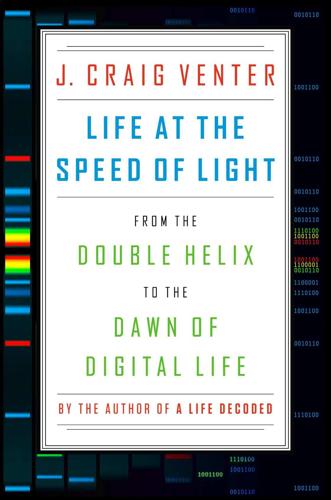
Life at the Speed of Light: From the Double Helix to the Dawn of Digital Life
by
J. Craig Venter
Published 16 Oct 2013
It is now clear that the structures seen in ALH 84001 are not from living things and that crystal growth mechanisms are able to produce deposits that resemble primitive cells.22 Over the next few years my team would go on to sequence a large number of unusual species genomes, including one that was inspired by the pioneering work of Barry Marshall, in Australia. He and pathologist Robin Warren believed that spiral-shaped bacteria, later named Helicobacter pylori, were responsible for stomach ulcers. I had been inspired by how Marshall had persevered, despite his work’s being constantly challenged. His peers did not want to believe that bacteria, and not stress, could be the cause of ulcers. In 1984 Marshall had had the courage of his convictions to swallow a solution of the bacteria.
…
He soon threw up and developed stomach inflammation. Eventually, his persistence paid off. His research made it possible for millions of people to be treated with antibiotics, which also reduced their risk of developing gastric cancer, instead of having to take daily acid-reducing drugs. We published the Helicobacter pylori genome in 1997,23 and in 2005 Marshall was awarded the Nobel Prize in Medicine.24 Because single-celled life has been in existence for close to four billion years, it has diversified to occupy a vast range of environments, from the freezing deserts of Antarctica to hot acidic springs. This ability to live at the extremes has earned these organisms that live in marginal environments the name “extremophiles.”
…
Hickey, D. E. Berg, J. D. Gocayne, T. R. Utterback, J. D. Peterson, J. M. Kelley, M. D. Cotton, J. M. Weidman, C. Fujii, C. Bowman, L. Whatthey, E. Wallin, W. S. Hayes, M. Borodovsky, P. D. Karp, H. O. Smith, C. M. Fraser, and J. C. Venter. “The complete genome sequence of the gastric pathogen Helicobacter pylori.” Nature 388 (1997): pp. 539–47. 24. See www.nobelprize.org/nobel_prizes/medicine/laureates/2005/marshall-cv.html. 25. H. P. Klenk, R. A. Clayton, J. F. Tomb, O. White, K. E. Nelson, K. A. Ketchum, R. J. Dodson, M. Gwinn, E. K. Hickey, J. D. Peterson, D. L. Richardson, A. R. Kerlavage, D.
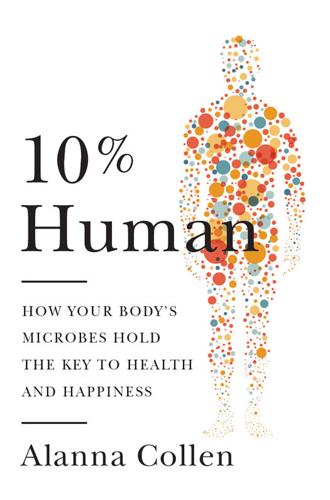
10% Human: How Your Body's Microbes Hold the Key to Health and Happiness
by
Alanna Collen
Published 4 May 2015
The nostrils, as you might expect from their gatekeeper status at the entrance to the lungs, harbour a great range of bacterial groups, numbering around 900 species, including large colonies of Propionibacterium, Corynebacterium, Staphylococcus and Moraxella. Heading down the throat towards the stomach sees the enormous diversity of species found in the mouth drop dramatically. The highly acidic stomach kills many of the microbes that enter with food, and just one species is known for certain to reside there permanently in some people – Helicobacter pylori, whose presence may be both a blessing and a curse. From this point on, the journey through the digestive tract reveals an ever-greater density – and diversity – of microbes. The stomach opens into the small intestine, where food is rapidly digested by our very own enzymes and absorbed into the bloodstream.
…
The cause of their failure to recover was deemed obvious; these patients must not be sticking to their treatment plans, allowing stress to prevent them from getting better. But then, in 1982, two Australian scientists, Robin Warren and Barry Marshall, discovered the truth. A bacterium called Helicobacter pylori that sometimes colonised the stomach was causing ulcers and the related condition gastritis. Stress and caffeine simply made them more painful. Such was the resistance of the scientific community to Warren and Marshall’s idea, that Marshall drank a solution of H. pylori, giving himself gastritis in the process, to prove the connection.
…
The fact that sufferers of IBD are considerably more likely than healthy people to go on to develop colorectal cancers hints at a deeper link between dysbiosis and health. It has long been known that certain infections can promote cancer. The human papillomavirus (HPV), for example, is behind most cases of cervical cancer, and the bacterium Helicobacter pylori that causes stomach ulcers can also initiate stomach cancer. The dysbiosis that comes along with IBD seems to add an extra layer of risk. The inflammation it causes somehow damages the DNA of the human cells lining the gut wall, allowing tumours to develop. The microbiota’s role in causing cancer is not limited to cancers of the digestive system.
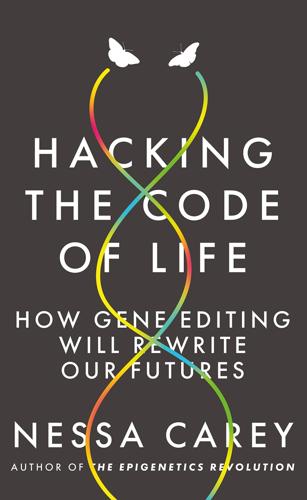
Hacking the Code of Life: How Gene Editing Will Rewrite Our Futures
by
Nessa Carey
Published 7 Mar 2019
In some ways Zayner was following in a long tradition of medical self-experimentation. Pierre Curie taped a packet of radium salts to his arm to demonstrate that radiation causes burns. Barry Marshall deliberately swallowed bacteria in order to test his hypothesis that stomach ulcers are caused by Helicobacter pylori infections (he was right, poor chap). One feature that is quite noticeable from this history of medical self-experimentation is that the person involved frequently suffered harm as a result of the procedure. This is often one of the drivers for self-experimentation. The individual would probably never get ethical approval to perform the experiment on someone else, or their own ethical compass made it unacceptable to them to do so.
…
1 ethics 1, 2 legal considerations 1 gluten proteins 1 GM crops/foods 1, 2 goats 1, 2 Golden Rice 1 gout 1 Greenpeace 1 growth hormone 1 Gruber Prize in Genetics 1 Guardian of the Genome 1 guide molecule 1, 2 H haemoglobin 1 adult 1 foetal 1 Harvard Medical School 1 He Jiankui 1, 2, 3, 4 health economics 1, 2 heart attacks 1 heel prick test 1 Helicobacter pylori 1 hereditary angioedema 1 heredity 1 HIV-1 1 hops 1 hormone deficiency 1 hormone replacement therapy 1 humans gene editing in 1 genetic disorders in see genetic disorders genome sequence 1 Hunter’s syndrome 1, 2 Huntington’s disease 1, 2, 3 I immune cells 1 immune defenders 1 immunity adaptive 1 bacterial 1 Imperial College London 1 influenza 1 vaccine 1 informed consent 1 insecticides 1 insects, gene editing in 1, 2 Institute of Livestock and Grassland Science (Tsukuba) 1 insulin 1, 2, 3 intellectual property 1, 2 iridescence 1 irradiation 1 IVF 1, 2, 3, 4, 5, 6 J Johannsen, Wilhelm 1 K Kanuma 1 Kavli Prize 1 Kennedy, John F. 1 Kenya 1 kidneys 1 King’s College London 1 Komodo dragons 1, 2 L The Lancet 1 Lander, Eric 1 Latin America, invasion by Europeans 1 learning disability 1 Leber’s congenital amaurosis 1 Leigh syndrome 1 Lepidoptera 1 Lesch-Nylan syndrome 1 life expectancy 1 Linnaeus, Carl 1 liver 1, 2 London Underground 1 Lulu 1 M macular degeneration 1 Madeux, Brian 1 maize 1 malaria 1, 2, 3 Marraffini, Luciano 1 Marshall, Barry 1 ‘matching’ 1 McCullough, Candy 1 measles 1 meat consumption 1 lean 1 medical self-experimentation 1 melanin 1 Mendel, Gregor 1 Merino sheep 1 mice 1, 2 Michelangelo 1 mitochondria 1 MMR vaccine 1 Mojica, Francisco 1 mosquitoes 1, 2 Friendly Mosquito 1 moths 1 mouse cell lines, gene editing in 1 multiple sclerosis 1, 2 muscle development 1, 2 muscle wasting 1, 2 mushrooms 1 mutations 1, 2 myostatin gene 1, 2 N Nana 1 narcolepsy 1 National Institute for Health and Care Excellence 1 Nature Methods 1 neonicotinoids 1 neurodegeneration 1, 2 neurons 1 New Hope Fertility Centre (New York) 1 New Zealand 1 Nixon, Richard 1 Nobel Prize 1 O oral contraceptives 1 organ transplantation 1, 2 over-consumption 1, 2 Oxitec 1 oxygen 1, 2 P p53 1 paracetamol 1 Parkinson’s disease 1 Parton, Dolly 1 patents 1, 2 peas 1 peer review 1 Perdue, Sonny 1 pesticides 1 pharmaceuticals 1 phenylketonuria (PKU) 1 Piedmont cattle 1 pigs 1, 2, 3, 4 organ transplants from 1 pituitary gland 1 plant cells 1 plants first gene-edited 1 gene editing in 1 speeding up breeding 1 polio 1 pollinating insects 1 population, world 1 potatoes 1 pre-implantation genetic diagnosis 1 pre-natal testing 1 Predator Free 2050 1 prickly pear cactus 1 privileged sites 1 proteins 1 PRRSV 1 Purdue University (Indiana) 1 Pusztai, Árpád 1 R rabbits 1, 2 radiation 1, 2 raptors 1 rats 1, 2 recessive genetic disorders 1 red blood cells 1 regenerative medicine 1 research flawed 1 investments in 1 retinitis pigmentosa 1 rheumatoid arthritis 1, 2 rice Golden 1 yields 1 Riley, Eleanor 1 risk, assessing 1, 2 RNA 1, 2 Rochester, University of 1 Rockefeller University (New York) 1 rodents 1 Roslin Institute 1 Royal Society 1 S safety, drug 1 salinity 1 Sangamo Therapeutics 1 schizophrenia 1 Science journal 1, 2, 3 scissors 1 self-mutilation 1 sheep 1 Merino 1 Texel 1 Shiant Isles 1 sickle cell disease 1, 2, 3, 4 sign languages 1 Šikšnys, Virginijus 1 single gene disorders 1, 2 sketching gene 1 skin blistering 1 sleeper agents 1 small molecules 1, 2 snakebites 1 South Georgia 1 space programme 1 spacers 1 sperm 1, 2, 3, 4 mosquito 1 spinal cord regeneration 1 St John’s wort 1 Stanford University (California) 1, 2 statins 1, 2, 3 stem cells 1, 2 stick insects 1 Stockholm 1 stomach ulcers 1 strawberries 1 strokes 1 structural colouration 1 suicide genes 1 super-beings 1 Surani, Azim 1 T tetracycline 1 Texel sheep 1 thalassemias 1, 2, 3 U UCP1 gene 1 UK, three-parent procedures 1 University of California, Berkeley 1, 2, 3, 4 University of California, San Diego 1 University of California, San Francisco (UCSF) 1, 2 uric acid 1 US Department of Agriculture 1, 2, 3 US Patent Office 1 V vaccination 1, 2 Vertex Pharmaceuticals 1 Viagra 1 Victoria, Queen 1 Vienna, University of 1, 2 Vilnius, University of 1 viral infections 1 vitamin A 1 W Wakefield, Andrew 1 Washington Post 1 water, competition for 1 Watson, James 1 wheat 1, 2, 3 Wilkins, Maurice 1 wisdom 1 World Health Organization 1, 2, 3 X xenotransplantation 1 Y Yamanaka, Shinya 1 yeast 1, 2 yellow fever 1, 2 yields, of crops 1 Z Zayner, Josiah 1 Zhang, Feng 1, 2, 3, 4 Zika virus 1, 2 zygotes 1, 2, 3 ABOUT THE AUTHOR Nessa Carey worked in the biotech and pharma industry for thirteen years and is a Visiting Professor at Imperial College London.

The Cancer Chronicles: Unlocking Medicine's Deepest Mystery
by
George Johnson
Published 26 Aug 2013
As the rest of the world develops, the same patterns are appearing as those in the West. Poorer countries tend to be dominated at first by cancers that spread through sexual intercourse and overcrowding—those induced by viruses. There is human papillomavirus and cervical cancer, hepatitis B and C and liver cancer, Helicobacter pylori and stomach cancer. With better hygiene and the growing use of Pap smears (and more recently HPV vaccine), cervical cancer may begin to recede. But then new cancers will arise to take its place. As women choose to have fewer children and their better nourished daughters begin menstruating at an earlier age, there may be more estrogen-driven cancers of the uterus and breasts.
…
There were lectures on the ways in which a cancer cell can elude destruction by the immune system—or turn it to its own uses, attracting macrophages as allies in the cause. The slow burn of chronic inflammation is somehow involved with many diseases—rheumatoid arthritis, Crohn’s disease, Alzheimer’s, obesity, diabetes—and it also plays a role in cancer. Stomachs inflamed by an immune response to Helicobacter pylori bacteria or livers inflamed by hepatitis virus are more likely to become cancerous. But how much is cause and how much is effect? The chemical circuitry is still being uncovered. A full session was devoted to the question of how molecules called sirtuins, which have been implicated in the aging process, also play a role in inflammation, obesity, and therefore in cancer.
…
population statistical research in terminology of genomes, 2.1, 5.1, 6.1, 9.1, 9.2, 11.1, 11.2, 12.1, 13.1, 13.2, epl.1 geography, and cancer risk Germany, 3.1, 3.2, 4.1 germ cells Gitau, Juma Gleevec gliomas glucose, 2.1, 9.1, 10.1, 10.2, 13.1, 13.2 glycogen Gorlin syndrome Gould, Stephen Jay, 8.1, 12.1 gout Grady, Denise, 8.1 “Great Cancer Wars,” Green River, 1.1, 1.2 Grufferman, Seymour Gunther, John Gynecologic Oncology, Haddow, Alexander Hadrosauridae “Hallmarks of Cancer, The” (Hanahan and Weinberg) “Hallmarks of Cancer: The Next Generation” (Hanahan and Weinberg) Hamann-Todd Human Osteological Collection hamsters Hanahan, Douglas, 9.1, 9.2 Harmon, Amy Hart, Ian Harvard, 8.1, 9.1, 9.2, 10.1, 12.1, 12.2 Hayflick limit heart cancer of “cell fate” and chemotherapy damage to heart disease, 10.1, 10.2, 10.3 hedgehog genes, 6.1, 12.1 height Helicobacter pylori, 7.1, 9.1 hemangiomas, 1.1, 1.2 hepatitis, 2.1, 3.1, 5.1, 7.1, 7.2, 9.1 HER2/neu, gene, 8.1, 9.1, 12.1 “HER2/neu Overexpression: Has the Achilles’ Heel of Uterine Serous Papillary Carcinoma Been Exposed?,” herbicides Herceptin (trastuzumab), 8.1, 9.1, 12.1 Hershey, Alfred Hillis, Daniel Hippocrates, 3.1, 4.1 Hippocratic oath Hippo genes Hiroshima Hispanics histidine “hitchhiker” mutations HIV/AIDS Hodgkin’s lymphoma, 7.1, 7.2, 8.1 Holocene era holoprosencephaly Hooker Electrochemical Company hope, hopefulness for cancer cure, 9.1, 9.2, 9.3 as coping mechanism, 2.1, 3.1, 8.1, 8.2, 11.1, 12.1, epl.1, epl.2 in Nancy’s cancer, 6.1, 8.1 hormesis hormone replacement therapies, 2.1, 7.1 hormones as destructive endocrine system see also specific hormones horses, Nancy’s love of, 13.1, 13.2 Human Microbiome Project human papillomavirus (HPV), 3.1, 5.1, 7.1, 7.2, 10.1, epl.1 hummingbirds humors Huntington’s disease hyperotosis hypertension hypertumors hysterectomy, 4.1, 6.1 “immortal devil,” immune system, 3.1, 4.1, 5.1, 9.1, 10.1, 11.1, 12.1, 13.1 boosters, 9.1, 13.1 compromised lymph in immunoglobulins Imperial College School of Medicine impotence incontinence, 12.1 India industrial chemicals, as cancer source, 1.1, 2.1, 7.1, 7.2, 7.3, 7.4, 7.5, 10.1 Industrial Revolution inflammation, cancer risk from, 9.1, 10.1 insects, tumors in insulin, in cancer risk, 2.1, 10.1, 10.2 insulin-like growth factors (IGFs) International Agency for Research on Cancer, 7.1, 13.1 Internet in cancer research misinformation on wireless Interphone introns ionizing radiation, 1.1, 11.1, 13.1, 13.2 Iowa, radon levels in Iron Age Italy, 10.1, 10.2 Japan, 7.1, 7.2, 10.1 Java man jaw Joe’s cancer of Kanam of primitive fish Jesse H.
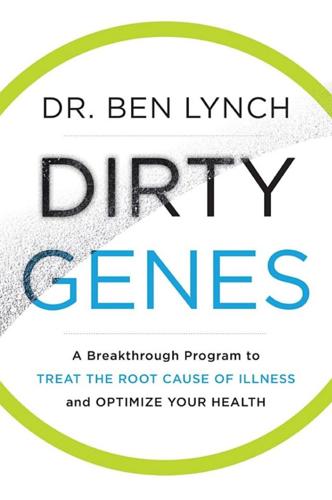
Dirty Genes: A Breakthrough Program to Treat the Root Cause of Illness and Optimize Your Health
by
Ben Lynch Nd.
Published 30 Jan 2018
* * * Key Nutrients for a Healthy MTHFR and Methylation Cycle Here are some of the key nutrients that your MTHFR and your Methylation Cycle need to work properly: Riboflavin/B2: liver, lamb, mushrooms, spinach, almonds, wild salmon, eggs Folate/B9: green vegetables, beans, peas, lentils, squash Cobalamin/B12: red meat, salmon, clams, mussels, crab, eggs (vegans and vegetarians, you guys have to supplement) Protein: animal sources including beef, lamb, fish, poultry, eggs, and dairy; vegan/vegetarian sources including beans, peas, lentils, broccoli, nuts, seeds Magnesium: dark leafy greens, nuts, seeds, fish, beans, avocados, whole grains * * * Reasons You Might Be Low in Cobalamin/B12 ■Vegan/vegetarian diet ■Omnivore diet lacking enough meat, poultry, eggs, and fish ■High stress ■Antacid use ■Helicobacter pylori (or H. pylori), a type of bacterium that can proliferate in the intestine ■Pernicious anemia (an autoimmune disease) * * * * * * Methylation Miracles I love reading about how life-changing clean genes can be. It makes everything I do seem worthwhile. I had inspiration for days after receiving the following letter from Sheryl Grelyak: I never believed that anything could help my high-functioning autistic son.
…
■Alzheimer’s disease ■Amyotrophic lateral sclerosis (ALS) ■Anxiety ■Autism ■Autoimmune conditions, including Graves’ disease, Hashimoto’s thyroiditis, multiple sclerosis, rheumatoid arthritis ■Cancer ■Chemical sensitivity ■Chronic infections such as hepatitis, mold reaction, Epstein-Barr, Helicobacter pylori, and Lyme disease ■Crohn’s disease ■Depression ■Diabetes, types 1 and 2 ■Eczema ■Fatigue ■Fibromyalgia ■Heart disease ■Hypertension ■Hearing loss ■Homocysteine surplus ■Infertility ■Keshan disease (a type of heart problem) ■Mental disorders, including major depressive disorder, bipolar disorder, schizophrenia, and obsessive-compulsive disorder ■Migraine ■Obesity ■Parkinson’s disease ■Pregnancy complications ■Psoriasis ■Seizure ■Stroke ■Ulcerative colitis ■Vision loss (progressive worsening) * * * GST and Your Microbiome There are many types of GST gene, each with its own unique job.
…
For more information, see PEMT Spot Cleaning. Fixing High Histamine in the Gut High histamine in the gut can be triggered by a variety of causes—pathogenic bacteria, leaky gut, and many more—each of which has its own distinctive fix. Let’s look at those causes in turn: ■Overgrowth of pathogenic bacteria. —Blastocystis hominis, Helicobacter pylori, Clostridium difficile, and other bacteria are very common. Interestingly, if one person in your family has this type of pathogen, typically everyone else does, too. Using natural antimicrobials (see below) can help get rid of the pathogens, but they might come back if you’re stressed, have low stomach acid, use antacids, take antibiotics, or consume contaminated food or water.
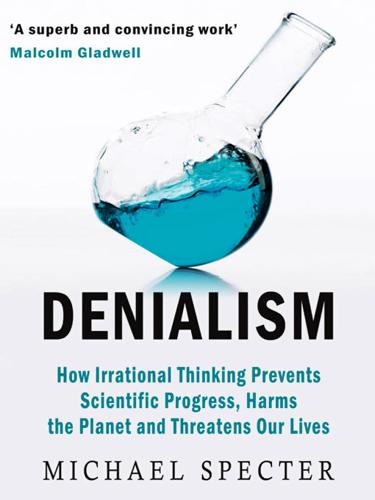
Denialism: How Irrational Thinking Hinders Scientific Progress, Harms the Planet, and Threatens Our Lives
by
Michael Specter
Published 14 Apr 2009
In 2006, a team of Endy’s undergraduate students used those tools to genetically reprogram E. coli (which normally smells awful) to smell like wintergreen while it grows and like bananas when it is finished growing. They named their project Eau d’E Coli. By 2008, with hundreds of students from dozens of countries participating, the winning team—a group from Slovenia—used biological parts that they had designed to create a vaccine for the stomach bug Helicobacter pylori, which causes ulcers. There are no such working vaccines for humans. (So far, the team has successfully tested their creation on mice.) This is open-source biology, where intellectual property is shared freely. What’s freely available to idealistic students, of course, would also be available to terrorists.
…
.- Federal Aviation Administration (FAA) Federoff, Nina Feinberg, Harvey Feynman, Richard Finland, vaccinations in Fisher, Barbara Loe flu virus (1918), reconstruction of flying, fear of folic acid food, see genetically modified food; organic foods food additives Food and Agriculture Organization (FAO), UN Food and Drug Administration (FDA): and AIDS drug protests bureaucracy of drugs approved by and ephedra formation of and public trust and raw food and safety issues and vaccines and Vioxx food labels Foo Fighters Ford Motor Company, and Pinto Frankel, Rob “frankenfoods,” Franklin, Benjamin Franklin, James free radicals Fresco, Louise Friends of the Earth fuel: biofuels hydrocarbons burned for GALA (Genetics of Asthma in Latino Americans) Galanis, Evanthia Galileo Galilei Galton, Francis Gardner, Steve Gattaca (film) Geier, David Geier, Mark General Mills Generation Rescue genes: construction of evolution of manipulation of mutations in unpredictability of genetically encoded memory systems genetically modified food- for Africa canola cassava environmental effects of fears of golden rice opponents of safety of and seeds unintended consequences of vs. nature’s dangers Genetically Modified Science Review Panel, UK genetic code, nonlinear genetic engineering genetics: and disease - and environment and eugenics and human genome and intelligence pharmacogenetics and race recent developments in Genetics of Asthma in Latino Americans (GALA) genocide genome: data carried on one’s cell phone sequencing of study of synthetic creation of genomics: abuse of author’s tests in industry- medical applications of Personal Genome Project and SNPs transgenic organisms created in George I, king of England, children vaccinated Gilbert, Walter Gilmartin, Ray global warming Glofish glutamine Gluud, Christian Godard, Jean-Luc Goethe, Johann Wolfgang von golden rice Gonzalez, Nicholas Google Gordon, Jay Gorski, David Government Accountability Office (GAO) Graham, David Green Our Vaccines Greenpeace Green Revolution Griffith, Saul Gulcher, Jeff Haley, Boyd Hamill, Dorothy Handley, J. B. Harkin, Tom harm, quantification of Harvard Medical School, ethical questions in Hatch, Orrin Healing Every Autistic Life Healy, Bernadine Heidmann, Thierry Helicobacter pylori helmets, use of hemochromatosis herd immunity heredity Hib influenza (Haemophilus influenzae type B) Hispanics: asthma in and disease Holocaust deniers Homa, David homeopathy homeschooling hope HPV (human papilloma virus) vaccine Huffington Post Human Genome Project Hunter, David J.

Radical Uncertainty: Decision-Making for an Unknowable Future
by
Mervyn King
and
John Kay
Published 5 Mar 2020
Dr Robin Warren, an Australian pathologist, tried for many years to argue that ulcers were in fact the result of a bacterial infection. In the 1980s, together with fellow Australian Barry Marshall, he studied biopsies from a hundred patients and cultivated a bacterium which became known as Helicobacter pylori from some of these biopsies. They found that the organism was present in almost all the patients with gastric inflammations and duodenal and gastric ulcers. Yet it proved difficult to change the dominant narrative. Conventional treatment for ulcers required daily medication, possibly for life.
…
M., ‘Portfolio Selection’, Journal of Finance , Vol. 7, No. 1 (1952), 77–91 Márquez, G. G. and Stone, P. H., ‘Gabriel García Márquez, The Art of Fiction No. 69’, The Paris Review , No. 82 (1981) Marshall, A., Principles of Economics (1890) Marshall, B. J., ‘Helicobacter Connections’, Nobel Prize lecture (8 Dec 2005) Marshall, B. J. and Adams, P. C., ‘Helicobacter Pylori: A Nobel Pursuit?’, Canadian Journal of Gastroenterology and Hepatology , Vol. 22, No. 11 (2008), 895–6 Martin, V., The Ghost of the Mary Celeste (London: Hachette, 2014) Marwell, G. and Ames, R. E., ‘Economists Free Ride, Does Anyone Else? Experiments on the Provision of Public Goods, IV’, Journal of Public Economics , Vol. 15, No. 3 (1981), 295–310 Mauss, M.
…
J., 71 Graham, Benjamin, 82–3 , 335–6 Grand Banks of Newfoundland, 368–9 , 423 , 424 Graunt, John, 56 , 69 , 232 , 328 , 383 Great Depression, 5 , 15 , 240 , 338 , 348 Great Divergence, 419–20 Greece, classical, 53–4 , 142 Greene, Graham, 438 Greenspan, Alan, 260 , 317–18 Groopman, Jerome, How Doctors Think , 184 Groundhog Day (film, 1993), 419 Gulf War (1991), 270 , 271 , 272 Hahn, Frank, 344–5 Halifax, Lord, 25 Hall, Monty, 62–3 , 65 Halley, Edmond, 56 , 57 Hamilton (musical), 216 , 217 Hamilton, W. D., 156 Hardy, G. H., 432 Hastings, Max, 299 Hausman, Daniel, 259 health insurance, 251 health services, 409 , 426–7 hedge funds, 5 , 36 , 55 , 269 , 309 , 422 Helicobacter pylori , 284 Herodotus (Greek historian), 187 Hewlett-Packard, 27 , 31 historical narratives, 186–8 , 215 , 356–7 ; and ‘resulting’, 265–7 Hitler, Adolf, 26 , 266 , 292 ; invasion of Russia (1941), 25 , 219 , 266 HIV infections, 375–6 Holmes, Elizabeth, 228–9 Holmes, Sherlock (fictional character), 147 , 212–13 , 218 , 224–5 , 253 Holmes Jr, Oliver Wendell, 211 Holmes Sr, Oliver Wendell, 282–3 Hopkins, Harry, 411–12 Howe, Geoffrey, 291 Hubbert, Marion King, 361 , 362 Hume, David, 70 , 421 IBM, 27 , 28–9 , 31 , 123 , 415 Ifo institute, 370 Iggers, Georg, 187–8 inductive reasoning, 70 , 138 , 235 , 256 , 388 , 398 , 421 industrial organisation theory, 275 Industrial Revolution, 55 , 419 inflation, 95–6 , 103–5 , 340 insurance markets, 43 , 55–6 , 124–5 , 322–4 , 327 ; and big data, 327 ; emergence in seventeenth century, 325 ; Fourteenth International Congress of Actuaries (1954), 326 ; health insurance, 251 ; idiosyncratic risks, 322–4 , 325 , 326 ; international reinsurance companies, 325–6 ; mortality tables and life insurance, 56–7 , 69 , 232–3 ; mutualisation, 325–6 ; osotua framework in East Africa, 160–1 , 189 ; and reference narrative concept, 125 , 126 , 160–1 ; Solvency II directives, 312 Intel, 28 interest rates, 103–5 , 285–6 International Archives of Medicine , 243 International Monetary Fund (IMF), 317 , 349 Ioannidis, John, ‘Why Most Published Research Findings Are False’, 245 iPhone, 30 iPod, 30 Iraq, US led invasion of (2003), 7–8 , 282 , 295 , 300 , 407 , 412 , 413 Irish potato blight, 167 , 429 Irving Janis, 279 Isaacson, Walter, 169 Ishiguro, Kazuo, The Remains of the Day , 220 , 306 Islamic terrorism, 7 , 74–6 , 202 , 220 , 230 , 296 Italy, 428 Jackson Hole, Wyoming, 317–18 Japan: economic successes (1970s/80s), 315–16 ; keiretsu of, 276 ; shogunate, 419 , 420 , 430 jet engine, 23 Jevons, W.
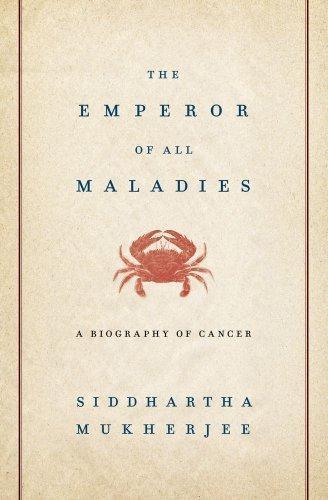
The Emperor of All Maladies: A Biography of Cancer
by
Siddhartha Mukherjee
Published 16 Nov 2010
When he remembered and returned to examine them, he found tiny, translucent pearls of bacterial colonies growing on the agar. The long incubation period had been critical. Under the microscope, the bacterium growing on the plate was a minuscule, slow-growing, fragile organism with a helical tail, a species that had never been described by microbiologists. Warren and Marshall called it Helicobacter pylori—helicobacter for its appearance, and pylorus from the Latin for “gatekeeper,” for its location near the outlet valve of the stomach. But the mere existence of the bacteria, or even its association with ulcers, was not proof enough that it caused gastritis. Koch’s third postulate stipulated that to be classified as a bona fide causal element for a disease, an organism needed to re-create the disease when introduced into a naive host.
…
He persuaded a colleague to perform serial biopsies to document the pathological changes, and he was diagnosed with highly active gastritis, with a dense overlay of bacteria in his stomach and ulcerating craters beneath—precisely what Warren had found in his patients. In late July, with Warren as coauthor, Marshall submitted his own case report to the Medical Journal of Australia for publication (“a normal volunteer [has] swallowed a pure culture of the organism,” he wrote). The critics had at last been silenced. Helicobacter pylori was indisputably the cause of gastric inflammation. The link between Helicobacter and gastritis raised the possibility that bacterial infection and chronic inflammation caused stomach cancer.* Indeed, by the late 1980s, several epidemiological studies had linked H. pylori–induced gastritis with stomach cancer.
…
Robin Warren, “Unidentified Curved Bacilli in the Stomach of Patients with Gastritis and Peptic Ulceration,” Lancet 323, no. 8390 (1984): 1311–15; Barry Marshall, Helicobacter Pioneers: Firsthand Accounts from the Scientists Who Discovered Helicobacters, 1892–1982 (Hoboken, NJ: Wiley-Blackwell, 2002); Warren, “Helicobacter: The Ease and Difficulty”; Barry J. Marshall, “Heliobacter Connections,” ChemMedChem 1, no. 8 (2006): 783–802. 283 “On the morning of the experiment”: Marshall, “Heliobacter Connections.” 284 The effect of antibiotic therapy on cancer: Johannes G. Kusters, Arnoud H. M. van Vliet, and Ernst J. Kuipers, “Pathogenesis of Helicobacter pylori Infection,” Clinical Microbiology Reviews 19, no. 3 (2006): 449–90. “A spider’s web” 286 It is to earlier diagnosis that we must look: J. P. Lockhart-Mummery, “Two Hundred Cases of Cancer of the Rectum Treated by Perineal Excision,” British Journal of Surgery 14 (1926–27): 110–24. 286 The greatest need we have today: Sidney Farber, letter to Etta Rosensohn, November 1962. 286 Lady, have you been “Paptized”?
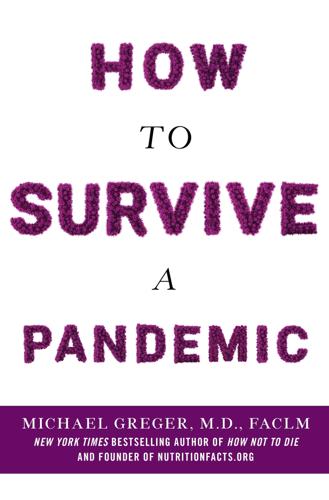
How to Survive a Pandemic
by
Michael Greger, M.D., FACLM
Suerbaum S, Michetti P. 2002. Helicobacter pylori infection. New England Journal of Medicine 347:1175–86 as cited in Torrey EF, Yolken RH. 2005. Beasts of the Earth: Animals, Humans, and Disease (New Brunswick, NJ: Rutgers University Press, p. 40). 902. Centers for Disease Control and Prevention National Center for Infectious Diseases/Division of Bacterial and Mycotic Diseases. 2005.Helicobacter pylori Infections (H. pylori). October 12. www.cdc.gov/ncidod/dbmd/diseaseinfo/hpylori_t.htm. 903. Dore MP, Sepulveda AR, El-Zimaity H., et al. 2001. Isolation of Helicobacter pylori from sheep-implications for transmission to humans.
…
Before then, the common cold was presumably common only to them. New zoonotic infections from domesticated farm animals continue to be discovered. The 2005 Nobel Prize in Medicine was awarded to the scientists who discovered in 1982 that bacteria living in the human stomach, which they called Helicobacter pylori, caused stomach cancer and the vast majority of peptic ulcers worldwide.900 Roughly half of the world’s population is infected.901 These ulcer-causing bacteria are thought to have originated in sheep’s milk but are now spread person to person via oral secretions—saliva or vomit—or perhaps, like cholera, the fecal-oral route due to poor handwashing following defecation.
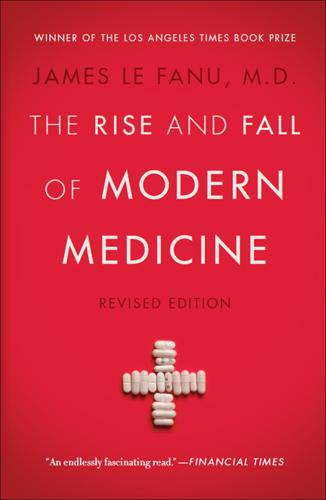
The Rise and Fall of Modern Medicine
by
M. D. James le Fanu M. D.
Published 1 Jan 1999
Walters, ‘Observations of 767 Clinical Pregnancies and 500 Births After Human in Vitro Fertilisation’, Human Reproduction, 1986, Vol. 1, pp. 89–94. 12: 1984: Helicobacter – The Cause of Peptic Ulcer GENERAL READING C. S. Goodwin, ‘Historical and Microbiological Perspectives’, Helicobacter Pylori Infection, eds T. C. Northfield et al. (Dordrecht: Kluwer Academic, 1993). Basil Hirschowitz, ‘History of Acid-peptic Diseases’, The Growth of Gastroenterological Knowledge During the Twentieth Century, ed. Joseph Kirsner (Lea & Febiger, 1994). Robert J. Hopkins, ‘Helicobacter Pylori: The Missing Link in Perspective’, AJM, 1994, Vol. 97, pp. 265–77. Howard M. Spiro, ‘Peptic Ulcer: Moynihan’s or Marshall’s Disease’, The Lancet, 1998, Vol. 352, pp. 645–6.
…
Hasterlik, ‘Leukaemia Among Children in a Suburban Community’, AJM, 1963, Vol. 34, pp. 796–812. 5.L. J. Kinlen, ‘Epidemiological Evidence for an Infective Basis in Childhood Leukaemia’, British Journal of Cancer, 1995, Vol. 71, pp. 1–5. See also M. F. Grieves, ‘Aetiology of Acute Leukaemia’, The Lancet, 1997, Vol. 1, pp. 344–9. 6.Martin J. Blaser, ‘Helicobacter Pylori and Gastric Diseases’, BMJ, 1998, Vol. 316, pp. 1507–10. 7.S. Shuster, ‘The Aetiology of Dandruff and the Mode of Action of Therapeutic Agents’, British Journal of Dermatology, 1984, Vol. 111, pp. 235–42. 8.Allen Steere et al., ‘The Spirochetal Aetiology of Lyme Disease’, NEJM, 1983, Vol. 308, pp. 731–40. 9.J.

Messy: The Power of Disorder to Transform Our Lives
by
Tim Harford
Published 3 Oct 2016
Ulcers weren’t curable, but managing their symptoms was a fantastically profitable business, producing the first blockbuster drugs, Tagamet and Zantac.1 Marshall and his colleague J. Robin Warren had a radically different view: ulcers weren’t caused by stress at all, but by a corkscrew-shaped bacteria, Helicobacter pylori. They could be cured promptly and completely by a course of inexpensive antibiotics. Nobody else took this view seriously, and there was a lot of money riding on it being untrue. Irritated and determined to prove his point, Barry Marshall drank a flask full of H. pylori. He swiftly became ill, with an inflamed stomach full of incipient ulcers—and just as swiftly cured himself with a course of antibiotics.
…
See also Oblique Strategies Enterobacter aerogenes, 209 Enterprises, network of, 27–28 Entrepreneurs, 2, 29, 52–53, 94–95 ER (TV show), 25 Erdős, Paul, 35–39, 57, 271n5 European Union, 163–64 Evans, Bill, 95, 96, 275n15 Evans, Gil, 275n15 Evolution, 27, 216 Facebook, 29, 55, 101, 256–57 Fallows, James, 134 Famous Five books (Blyton), 45 Faurie-Raymond hypothesis, 120 Federal Trade Commission, 137 Ferguson (Mo.), 55 Filing systems, 64, 67, 191, 235–38, 240 computer, 233, 236n, 239–40 Filo, David, 125 First World War, 117–18, 122 5S system of management (Sort, Straighten, Shine, Standardize, Sustain), 63–66, 68 Fleming, Alexander, 25 Flexible attention, 26 Flowers, Paul, 250–51 Forestry in the Federal Republic of Germany (Plochman), 205 Forests, 150–52, 155, 157, 205–7, 215–16 4'33" (Cage), 75 Fox News, 55 France, 61–62, 188–89, 232 in world wars, 117–18, 122, 128, 144 Franklin, Benjamin, 207, 231–33 Fraser, David, 134 Freedman, David, 236 Freud, Sigmund, 93 Friendship networks, 53–54 Frieser, Karl-Heinz, 128n Frost, Jeana, 248, 249, 256 Frugès, Henry, 61 Fry, Hannah, 246 Functional magnetic resonance imaging (fMRI), 99 Fury, Tyson, 120 Galápagos Islands, 27 Gaming the system, 159–63, 169–71, 174–75 Gandhi, Mohandas K., 93 Gariboldi, Italo, 129 Gawande, Atul, 153 Gehry, Frank, 70, 73, 80, 81 Genesis (band), 9 Geneva, 25 Germany, 1–5, 7–9, 20, 33, 174 forests in, 150–53, 205–7, 215, 216, 278n2 Nazi, 227–29, 259 in World Wars, 117–18, 122, 128–31, 135, 142, 143n, 145–48, 227 Gernsback, Hugo, 251 Gettysburg Address, 92 GI Bill, 75 Gigerenzer, Gerd, 165, 167n Gilead Sciences, 141 Gill, Tim, 262 Glasgow, 214 Golding, William, 45 Goldstein, Harvey, 158 Google, 24, 70, 80–82, 127, 139, 188–89, 191, 196 Gordimer, Nadine, 26 Gould, Stephen Jay, 26 GPS failures, 192–94, 196, 198 Granovetter, Mark, 36–37 Gray, Peter, 260 Gréco, Juliette, 97n Greece, 129, 163–64 Green, Lee, 166–67 Green, Nicola, 101–3 Greenberg, Andy, 187 Grindr, 244–45 Gruber, Howard, 27, 29 Guggenheim Bilbao, 70 Habit of yes, 105–7 Hackers, 75–78, 247–48 Haldane, Andy, 165–66, 170–73 Halle, Morris, 75, 76 Hankins, Victor, 187–88 Hannibal, 134 Hansa Studios (Berlin), 8 Harcourt, Bernard E., 224 Harrington, Brooke, 50–51, 58 Harris, T George, 85–86 Hartig, Georg, 206 Harvard Business Review, 141 Harvard University, 156, 243–44 Haslam, Alex, 65–68 Hastie, Reid, 46 Haworth, Guy, 121 Health care, 149–50, 152–55, 157–61, 166, 172, 173 Heart attacks, 154, 165–67, 169 Helicobacter pylori, 207–8 Herman Miller, Inc., 83 Heuristics, 165 Hidalgo, Cesar, 215–16 Hilbert, David, 226–27 Hirschberg, Julia, 238 Hitler, Adolf, 128, 129, 147–48, 227, 228 House, Simon, 9 How Buildings Learn (Brand), 79 Howard-Jones, Paul, 19 Human Error (Reason), 183 Humphrey, Laura, 241–42 Hunt-Davis, Ben, 33–35, 38, 39 Hunter-Tilney, Ludovic, 15 IBM Research, 240 Ibrahim, Rahinah, 189–90 Improvisation, 91–115, 253, 257, 264 in business, 127, 137, 143 creativity and, 1–4, 95–101, 105, 108–10 in military strategy, 119, 123, 128n, 129–30, 135, 139–40, 143–46 in public speaking, 94–95, 108–15 in workplace, 72, 75 Incentives.

Calling Bullshit: The Art of Scepticism in a Data-Driven World
by
Jevin D. West
and
Carl T. Bergstrom
Published 3 Aug 2020
Recall our table from the prosecutor’s fallacy: MATCH NO MATCH Guilty 1 0 Innocent 5 50,000,000 The analogous table for the base rate fallacy is as follows: POSITIVE TEST NEGATIVE TEST Infected 10 0 Uninfected 500 10,000 In each case, the mistake is to compare probabilities along the bottom row instead of down the left column. The base rate fallacy is less of an issue if you are testing for a condition that is very common. Suppose you are treating a young Caucasian woman from the upper Midwest for stomach problems, and you decide to test for the presence of Helicobacter pylori, a stomach pathogen associated with peptic ulcers. As with the antibody test for Lyme disease, about 5 percent of uninfected people test positive when they use the urea breath test. If your patient tests positive, what are the chances that she is carrying Helicobacter? Is it also 1 in 100? No, it’s far greater, because Helicobacter is a common pathogen.
…
We’ve seen that scientists are finely attuned to the reward structure of their professional world, that rewards accrue mostly for publishing interesting work, and that it is difficult to publish negative results. So we would expect scientists to test hypotheses that, while undecided, seem reasonably likely to be true. This moves us toward the domain of the Helicobacter pylori example, where the majority of positive results are true positives. Ioannidis is overly pessimistic because he makes unrealistic assumptions about the kinds of hypotheses that researchers decide to test. Of course, this is all theoretical speculation. If we want to actually measure how big of a problem publication bias is, we need to know (1) what fraction of tested hypotheses are actually correct, and (2) what fraction of negative results get published.
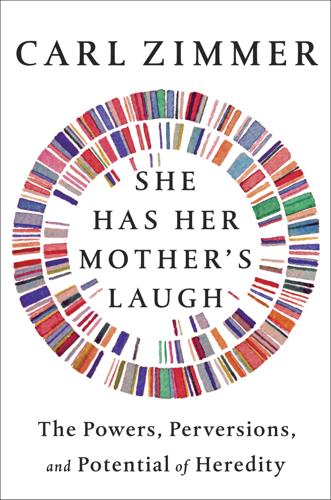
She Has Her Mother's Laugh
by
Carl Zimmer
Published 29 May 2018
The oligosaccharides in human milk are different from those in the milk of other mammals. They may be adapted to foster some of our own strains of bacteria, shutting out others that can grow in other species. In a few cases, bacteria get passed down so loyally from human parents to children that they can serve as rough genealogical records. A species known as Helicobacter pylori adapted long ago to life in the human stomach. Impervious to the digestive juices we make, it guzzles glucose in the food we eat. How a microbe can get from one human stomach into another is a mystery, but epidemiological studies show that infections with H. pylori start early in childhood.
…
the strains that move most successfully through nursing into the babies: Asnicar et al. 2017. Mothers may thus transmit microbes to future generations: Foster et al. 2017. Howard Ochman: Moeller et al. 2016. oligosaccharides in human milk: Browne et al. 2017; Urashima et al. 2012. Helicobacter pylori: Cellini 2014. The history recorded in its branches: Moodley et al. 2012. intertwined with our own heredity: See Goodrich et al. 2016; Van Opstal and Bordenstein 2015. was only discovered in 2012: Morotomi 2012. weight is heritable: Silventoinen et al. 2016. mitochondria, the tiny pouches that produce fuel inside our cells: See Archibald 2015; Ball, Bhattacharya, and Weber 2016; Gray 2012; Martin et al. 2016; McCutcheon 2016; Rogers et al. 2017.
…
Canberra: National Library of Australia. Cavazzana-Calvo, Marina, Emmanuel Payen, Olivier Negre, Gary Wang, Kathleen Hehir, Floriane Fusil, Julian Down, and others. 2010. “Transfusion Independence and HMGA2 Activation after Gene Therapy of Human Β-Thalassaemia.” Nature 467:318–22. Cellini, Luigina. 2014. “Helicobacter pylori: A Chameleon-like Approach to Life.” World Journal of Gastroenterology 20:5575–82. Centerwall, Siegried A., and Willard R. Centerwall. 2000. “The Discovery of Phenylketonuria: The Story of a Young Couple, Two Retarded Children, and a Scientist.” Pediatrics 105:89–103. Centre of Microbial and Plant Genetics.
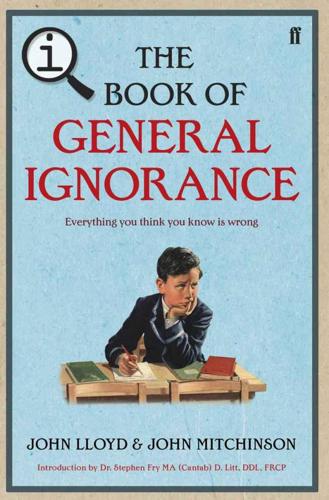
QI: The Book of General Ignorance - The Noticeably Stouter Edition
by
Lloyd, John
and
Mitchinson, John
Published 7 Oct 2010
Napoleon and James Joyce both died from complications connected with stomach ulcers. In the early 1980s, two Australian pathologists, Barry Marshall and Robin Warren, noticed that a previously unidentified bacterium colonised the bottom part of the stomachs of people who suffered from gastritis or ulcers. They cultivated it, gave it a name (Helicobacter pylori), and began to run trials. They found that when the bacteria were eliminated, the ulcers healed. Even today, most people still think that ulcers are caused by stress. The medical explanation was that stress diverted blood from the stomach, which reduced the production of its protective mucus lining.
…
He tested himself for the bacteria – his stomach was teeming with them – and then cured himself with a course of antibiotics. The medical establishment had been proved wrong. In 2005, Marshall and Warren were rewarded for their tenacity and vision, winning the Nobel Prize for Medicine. Helicobacter pylori is present in half the human population, and in almost everyone in developing countries. It is usually contracted in early childhood and can stay in the stomach for life. It only leads to ulcers in 10 to 15 per cent of those infected. We still don’t know why this should be, but we do know how to treat it.

Ageless: The New Science of Getting Older Without Getting Old
by
Andrew Steele
Published 24 Dec 2020
Infections can also directly cause seemingly unrelated diseases. In some cases the link is very clear, such as human papillomavirus (or HPV) causing cervical, mouth and throat cancers: HPV is now widely vaccinated against, primarily to reduce the risk of cancer rather than because the infection itself is particularly unpleasant. Another example is Helicobacter pylori, the bacterium which causes stomach ulcers and a substantial fraction of stomach cancers. There are also suggestive reports of bacteria and viruses being found in the plaques which clog our arteries in old age, and the brains of patients with dementia. Whether these bugs are the cause of these conditions, aggravate them, or are merely opportunistic or even innocent bystanders remains to be fully elucidated.
…
S., here Hallmarks of Aging, here hamsters, here hand-washing, here Hayflick, Leonard, here, here health and social care, here ‘healthspan’, here, here hearing loss, here heart disease, here, here, here, here, here, here, here, here, here, here, here, here, here, here, here, here and amyloids, here, here, here, here and lifestyle, here, here, here, here heart rate, here, here heartbeats per lifetime theory, here Helicobacter pylori, here hepatitis C, here herpesviruses, here, here HIV, here, here, here homeostasis, here hominins, here Horvath, Steve, here, here Human Genome Project, here human papillomavirus (HPV), here hunter-gatherer societies, here Huntington’s disease, here, here, here, here Hutchinson–Gilford progeria, here hydra, here hypothalamus, here immune system, here, here, here, here, here, here, here, here, here, here, here, here rejuvenation, here, here see also inflammation immunosuppressants, here, here, here industrialisation, here infant and child mortality, here, here, here inflammation, here, here, here, here, here, here, here and lifestyle, here, here, here, here, here inflammatory bowel disease, here insulin, here, here, here, here, here, here interleukin-6, here International Classification of Diseases (ICD), 32 Johnson, Tom, here Kenyon, Cynthia, here, here Klass, Michael, here, here Klotho gene, here, here Laron syndrome, here, here leukaemia, here, here, here Lewy bodies, here LHON (eye disease), here life, three-stage, here life expectancy, here, here, here, here, here, here, here, here and Laron syndrome, here and lifestyle, here and Parkinson’s disease, here lipofuscin, here, here liver disease, here, here, here longevity heritability of, here, here ‘longevity escape velocity’, here longevity genes, here lung cancer, here, here lung disease, here, here, here, here, here, here, here lupus, here lymph nodes, here, here lysosomal storage disorders (LSDs), here lysosomes, here McCay, Clive, here, here, here macular degeneration, here, here, here, here Maillard reaction, here malaria, here, here manganese peroxidase, here mayflies, here measles, here melanocytes, here melanoma, here metformin, here, here, here, here, here mice, here, here, here, here, here, here, here, here, here and antioxidants, here and cell signalling, here cloning experiments, here collagen longevity, here and dietary restriction, here, here, here, here, here and DR mimetics, here gut microbiome, here, here heart rate, here and immune system therapies, here, here, here and longevity genes, here, here, here mitochondria, here and mitochondrial therapies, here mouse models, here and p53 gene, here and parabiosis, here, here, here and plasma transfusions, here and senescent cell research, here and stem cells, here, here, here telomerase levels, here, here, here microRNA, here mitochondria, here, here, here, here, here, here, here mitochondrial free radical theory, here, here mitolytics, here mitophagy, here MitoQ, here, here Moore’s Law, here mortality, extrinsic vs. intrinsic, here motor neurone disease, here mouse lemurs, here mouse-eared bats, here, here mTOR, here, here multiple sclerosis (MS), here muscle mass, loss of, here, here, here mutation accumulation theory, here Mycobacterium tuberculosis, here Mycoplasma genitalium, here naked mole-rats, here, here, here National Institute on Aging (NIA), here National Institutes of Health, here, here, here navitoclax, here negative senescence, here negligible senescence, here nematode worms, here, here, here, here, here, here, here, here, here, here, here neurons, here, here, here, here dopaminergic, here, here NOTCH1 gene, here obesity, here oestrogen, here Ohsumi, Yoshinori, here Okinawans, longevity of, here Olympic athletes, here Orgel, Leslie, here osteoarthritis, here, here, here osteoblasts, here osteoporosis, here, here, here oxidation, here oxytocin, here, here p53 gene, here, here pandemics, here see also coronavirus parabiosis, here, here, here Parkinson’s disease, here, here, here, here, here, here, here, here and mitochondria, here, here and stem cell therapies, here, here, here PCSK9 inhibitors, here pensions, here, here Peto, Richard, here pets, and ageing, here pine trees, here plasma transfusions, here, here Plasmodium, here Plato, here population, global, here prebiotics, here preeclampsia, here prehistory, here, here, here probiotics, here progerias, here proteins, here, here, here, here plant proteins, here see also amyloids; collagen PRX004, here quantum computing, here Rapa Nui (Easter Island), here, here rapalogues, here rapamycin, here Rapu, Alphonso, here rate-of-living theory, here rats, here, here, here and parabiosis, here, here reactive oxygen species (ROS), here, here renewal tissues, here reproductive success, here, here, here, here, here resveratrol, here retirement, here rhesus macaques, here, here, here risk factors, here RTB101, here sabbaticals, here salamanders, here sarcopenia, see muscle mass, loss of SASP (senescence-associated secretory phenotype), here, here, here, here, here, here Sehgal, Suren, here selenium, here senescent cells, here, here, here, here, here, here, here, here and lifestyle, here removal of, here, here, here, here, here, here and shortened telomeres, here, here see also SASP senile systemic amyloidosis (SSA), here senolytics, here, here, here, here, here, here, here, here senomorphics, here SERPINE1 gene, here sex chromosomes, here sex hormones, here Shapiro, Amy, here shingles, here skin, sun-exposed, here, here, here sleep, here, here smallpox, here smell, loss of, here, here smoking, here, here, here, here Socrates, here Solomon, Beka, here spermidine, here, here Stargardt disease, here stem cells, here, here, here, here, here, here, here and epigenetic age, here in practical roles, here therapies, here, here, here and thymus rejuvenation, here see also haematopoietic stem cells (HSCs) sterilisation, here Strategies for Engineered Negligible Senescence (SENS), here, here stroke, here, here, here, here, here, here, here, here, here, here and lifestyle, here, here, here, here subcutaneous fat, here, here sudden death syndrome, here sunscreen, here supercentenarians, here synbiotics, here systems biology, here Szostak, Jack, here T cells, here, here, here, here TA-65, here taste, loss of, here tau protein, here, here teeth, here, here, here from stem cells, here telomerase, here, here, here, here, here, here, here telomeres, here, here, here, here, here, here, here, here, here, here, here, here and Dolly the sheep, here teratomas, here, here testicles, implantation of animal, here testosterone, here Tetrahymena, here, here, here TGF-beta, here thermodynamics, here, here Thiel, Peter, here thymus, here, here, here, here tortoises, here, here, here, here, here heart rate, here transdifferentiation, here transthyretin (TTR), here, here tuberculosis, here turquoise killifish, here Turritopsis dohrnii jellyfish, here turtles, here ultraviolet light, here, here, here urolithin A, here, here vaccines, here, here, here, here, here, here, here vampires, here van Leeuwenhoek, Antonie, here Victoria, Queen, here visceral fat, here vitamins, here, here Wallace, Alfred Russel, here, here water fleas, here Weismann, August, here Werner syndrome, here West, Mike, here whales, here, here, here whooping cough, here X-rays and DNA damage, here, here in medical and veterinary investigations, here, here Yamanaka, Shinya, here, here, here, here, here Yamanaka factors, here, here, here, here yeast, here, here, here, here, here zombies, here, here, here, here A NOTE ON THE AUTHOR After obtaining a PhD in physics from the University of Oxford, Andrew Steele decided that ageing was the most important scientific challenge of our time, and switched fields to computational biology.

As the Future Catches You: How Genomics & Other Forces Are Changing Your Work, Health & Wealth
by
Juan Enriquez
Published 15 Feb 2001
Then M.D.s decided that the cause of this distress was not disease … But environmental pressures like angst, overwork, fear … They made a mistake because they focused on a symptom … Increased stomach acid. So they prescribed a series of best-selling drugs … Which make you feel better but ignore the problem … Because ulcers are caused by a bacterium, Helicobacter pylori … (a genome sequenced by The Institute for Genomic Research [TIGR]) … And it turns out that when you reduce the acid in your stomach … The bacterium that causes the disease is also happier … and keeps reproducing …15 Genomics, bioinformatics, and biocomputing are merging … (In gene start-ups like DoubleTwist, 80 percent of the 110 Ph.D.s … are computer scientists.)
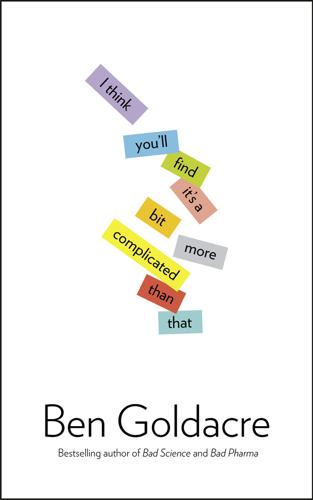
I Think You'll Find It's a Bit More Complicated Than That
by
Ben Goldacre
Published 22 Oct 2014
They were greeted eagerly, and with some horror: in fact, the finding was so concerning that the trial had to be stopped early, to avoid putting any further participants at risk, and medical practice was overturned. Even the supposed stories of outright medical intransigence turn out, on close examination, to be pretty weak: people claim that doctors were slow to embrace Helicobacter pylori as the cause of gastric ulcers, when in reality it only took a decade from the first murmur of a research finding to international guidelines recommending antibiotic treatment for all patients with ulcers. But individual stories aren’t enough. This week Vinay Prasad and colleagues published a fascinating piece of research about research.
…
Henry 134 education: building evidence into xvi, xvii, xx, 202–18; exam difficulty 188–90; omega-3 fish oil and 343–7 electrosensitivity xxi; journalists’ failure to mention the data 292–4; wi-fi, dangers of 289–91 Ellison, Jane 85 Elsevier 139, 143, 144, 283 employment/unemployment numbers 59–61 Epicure 197–8 epidemiology xviii, xxii, 3, 18, 99–108, 298, 299, 349–50, 365; anecdotes, illustrating data with 118–22; bicycle helmets, the law and 110–13; bowel cancer rates, variation in 101–4; confounding variables 107–9; journalists, primary research and 104–7; magnetic wine 122–6; mobile phone use and cancer 116–18; screening for health problems 113–15 Ernst, Professor Edzard 323 Essex University 293 Etherington, Bill 23 Euromonitor 345 European Court of Justice 241 European Union 56, 169, 192 Eurostat 56 euthanasia 22 evidence-based policy xix–xx, 167–218; coalition government NHS reforms and 169–77; coalition government sentencing policy for drug offenders and 177–9; Commons Committee on Science and Technology report on ‘scientific developments relating to the Abortion Act, 1967’ 196–201; education, building evidence into 202–18; exams pass rates/difficulty 188–90; as fascist ideology 297–9; homeopathy and 322; maths, thinktank complains about decline in quality of within Britain 194–6; organic food and 191–4; pornography in sperm donor clinics and 179–82; power of ideas and (diarrhoea and AIDS) 182–7 EvidenceMatters 252 evolutionary psychologists 42–6 exams, difficulty of xx, 188–90 exercise, weight gain and xxi, 335–8 facilitated communication 324–6 Family Nurse Partnership, The 212–13 Fernandez, Bishop Demetrio 184 Finch, Felicity 61–3 fish oil 29–31, 343–6 Fisher, Dr Peter 322 fluoride 22–5 ‘The Flynn Effect’ 188 ‘fMRI in the Public Eye’ (2005 Nature Reviews Neuroscience paper) 38–9 Food Standards Agency (FSA) 12, 191 Fowler, Lord Norman 285 Fox News 107 Freedom of Information Act 18, 105 fruit, eating 303–4 FullFact 159 funnel plots xviii, 102–4, 132 Galileo 8, 227 Gambia 182 Gardasil 333 Gardner, Martin 261, 262, 263, 264; In the Name of Science 261, 264, 264n; Fads and Fallacies 262 gastric ulcers 9 Geller, Uri 50 General Chriopractic Council 253 General Medical Council (GMC) 227, 249, 251, 347 Geshekter, Charles 285 ghost writers, commercial 25–8 Gimpyblog 252 GM foods 29 government statistics 147–65; child abuse figures 157–8; conflation of two different things into one omnibus figure 155; council spending figures 152–4; crime figures 162–5; impact of major multi-sports events on host population 155–7; music piracy figures 159–62; public and private sector pay figures 149–52 GP Research Database 79 GPs 82; abortions and 90, 91; antidepressant prescriptions and 106; cod liver oil and 2; consortiums/fundholding 171–2, 174, 175, 176; increase in numbers of 170; participation in research 216; surveying of patients in waiting rooms and 60 Gray, Theodore 373–5, 375n Great Ormond Street Hospital (GOSH) 119, 120, 121–2 Greece: national economic data xviii, 54–6 Greenberg, Steven 26, 27, 28 Greenfield, Susan 3–5 Griffin, Beverly 285 Griffiths, Noola 309 Guardian: Bad Science column see under individual subject area; ‘Cuts protest violence: 149 people charged’ story 155; decision not to print technical information on suicide 362; declines Ben Goldacre article 17–20; recession and anti-depressant link story and 105; Reform: ‘The Value of Mathematics’, coverage of 194; Taliban narcotics factory story 221; transparency about research methods in articles questioned 17–20 Guattari, Félix 297, 298 Hampshire Chronicle 57 Hansard 76 happiest place, Britain’s 56–8 Harper, Dr Diane 332, 33–4 Harper’s Magazine 261, 263 Harris, Evan 119 Harvard Medical School 26 Harvard School of Public Health 387 Harvard University: Center for Ethics 32 Harwood, Professor John 30–1 Hatzistefanis, Maria 255 HbA1c blood test 120 Health Professional Council 253 Health Select Committee, UK 84 Health and Social Care Information Centre (HSCIC) 80, 84–5, 86 Heard, Gerald: Is Another World Watching? 263 heart attack 8, 9, 79, 119–20, 134–6, 172, 173, 174–6, 209–10, 265 Hegarty LLP 256 Helicobacter pylori 9 hepatitis B 233, 356 hepatitis C 225, 233 heroin, xx, 221–4, 225–44 hierarchies of evidence 359 highly active antiretroviral therapy (HAART) 140 Hinkley Point 95–6 HIV 182–7, 225, 233–4, 244, 254, 281–3, 284, 285, 286 see also Aids Hodgkinson, Neville 283 Holfordwatch 252 Holt, Peter 19 Home Office xix, 157, 158, 159, 163, 193, 230, 232 home taping 159–62 homeopathy xvii, 20–1, 124, 137, 194, 262, 264, 304, 321–4, 389 Homeopathy News 389 homosexuality: age and 92–4; mental illness and 312–13 hormone-replacement therapy (HRT) 8–9 Hospital Episodes Statistics 18 Houben, Rom 324–6 House of Numbers (film) 281–3, 284 How to be Beautiful (Murray) 387 HPV 334 Huff, Darrell: How to Lie with Statistics 89–91 Hussein, Saddam 316–17 Hutton, John 221, 224 hypoactive sexual desire disorder (HSDD) 38 IARC (International Agency for Research on Cancer) 116 ICM 96 ignoring results from people you don’t trust 20–2 Imperial College 285 inclusion body myositis (IBM) 26, 27 Independent External Review for Department of Education on improving use if evidence and data in schools 202n Independent 29, 61, 197, 345, 390 Insight Cube™ 154 Institute of Child Health 120 intelligent design 13 International Journal of Evidence-Based Healthcare: ‘Deconstructing the Evidence-Based Discourse in Health Sciences: Truth, Power and Fascism’ (International Journal of Evidence-Based Healthcare) 297 International Journal of Obesity 338 International Journal of Psychology 15–16 internet use, autism and 3 The Internet’s Own Boy (documentary) 34 Interphone 118 Ioannidis, Professor John 9–10, 132, 133 Ion-Conditioning Hairdryer 388 IQ scores, gradual improvement in 188 Iraq, detecting bombs in 273–5; weapons of mass destruction (WMD) in 316–17 irrationality, science of xxi, 301–26; cigarette packaging 318–21; crime, outrage is lower when a criminal has more victims xxi, 306–9; evidence-based smear campaigns 316–18; facilitated communication in coma patients 324–6; female musicians’ clothing and performance 309–11; illusions of control 305–6; nocebo effect 321–4; pre-existing view, scientific evidence that challenges a 311–13; superstition and improved performance 313–15; visualisation and fruit intake 303–4 IVF 107, 180, 181 Jack of Kent (blogger) 252 Jammeh, Yahya 182 JCVI (Joint Committee on Vaccination and Immunisation) 353 Jill Dando Institute 163 Johnson, Alan 22, 24 Johnston, Lucy 333 Jordan, David Starr: Higher Foolishness 262 Journal of Aids 139 Journal of Applied Social Psychology 312 Journal of Public Health Nutrition 337 Journal of the American Chemical Society (JACS) 135 Journal of the American Medical Association (JAMA) 11, 12 Journal of Trionic Physics 388 Journal of Wine Research 125 journalism, bad xxi–xxii, 327–67; academic PR, dodgy 358–60; breast cancer and diet 338–40; caveats, hidden 338–40; cervical cancer jab, dangers of 331–4; exercise, weight gain and 335–8; fish oil and concentration 343–7; journalists linking to primary sources 340–2; MMR and 347–58; rape, women’s clothing, alcohol and 329–31; Roger Coghill and ‘the Aids test’ 363–7; suicide and phone masts 363–5; suicide, press coverage of details of 361–3 JSTOR 32–4 Kelsey, Tim 80, 81 Kelvedon Hatch secret nuclear bunker 94 Kemshall, Professor Hazel 158 Kenyon, Paul 289–90 King’s College London: Mobile Phones Research Unit 125 King’s Fund 19, 176 Kirlian photography 387 Krügel, Danie 275–7 Labour Party 59, 150, 155–6, 176, 177 Ladies Home Journal 44 Lancet 118, 121, 140, 145 Lansley, Andrew 171–4 Laureys, Professor Steven 326 Lawrence, Nikki 267 LayScience 252 libel xvii, xx, 245–58; BCA sue Simon Singh 250–4; breast enhancement cream 254–7; Dr Gillian McKeith calls Bad Science ‘lies’ 257–8; NMT sue Dr Peter Wilmshurst 247–50 libido problems, brain and 37–9 ‘Lindsay Syndrome’ 305–6 lipid-lowering drugs 119–20 local council overspending xix, 152–4 ‘locked-in syndrome’ 324, 325 Loebner Prize 392 London Raindance Film Festival 284 LSD 230 lucky ball xxi, 314 lung cancer 22, 107–9, 319 Lysenko, Trofim 262–3 McDonnell, Mary 307 McKee, Martin 175–6 McKeith, Gillian xvii, xx, 257–8 McTimoney Chiropractic Association (MCA) 253, 254 Maggiore, Christine 283, 285, 286 Maggiore, Eliza Jane 283, 286 magic boxes xxi, 271–8; ADE 651 273–5; bioresonance 277–8; Krügel missing people locator 275–7 magnetic wine 122–6 Manchester Evening News 155 Manning, Julia 180 Marcus, Adam 134 Marketing Innovations Inc. 21 Martin, Simon 278 masturbation, nasal congestion and 139, 143–6 maths, decline in quality of UK 194–6 MBA California Facial Mask 309 Mbeki, Thabo 185, 285 ‘Measuring the Mathematics Problem’ report, Engineering Council 190 Medical Hypotheses 139–46; AIDS denialism 138–41; ‘Down Subjects and Oriental Population Share Several Specific Attitudes and Characteristics’ article 139, 141–3; masturbation as a treatment for nasal congestion, articles discussing benefits and side effects of 139, 143–6 Medical Research Council 252 Medicines and Healthcare Regulatory Authority, The 321–2 Medline 125, 141 Melville, Caspar 281, 283 Merck 333 meta-analysis 235, 304, 359, 401 methadone 227–9, 231, 234–43 Metro 37–8, 66–7 MI5 52 microfinance 204–5 miniature steam railways xxii, 379–81 Ministry of Defence (MoD) 221–3 MinistryofTruth 252 ‘Miracle Mineral Solution’ 12 MIT 32–3 MMR jab 85, 304; Bad Science column manifesto and 399; Lancet 1998 paper on MMR, autism and bowel problems 145, Lucy Johnston stories on 333; return of scare stories about 347–58 mobile phones: cancer and 116–18, 290; council spending and 153, 154; electrosensitivity and 292; stalking your girlfriend using xxii, 382–3; suicides and phone masts 363–7 Mobile Phones Research Unit, King’s College London 125 Monbiot, George 32 Morgan, Rhys 12 Mozambique 183–4 MRI machines 37–9 MRSA 124 Mullen, Dr Michael 249 Mulrow, Celia 6 multiple sclerosis 356 Munro, Professor Geoffrey 312 Muntoni, Francesco 121 Murray, Dale 274 music piracy xix, 159–62 ‘Nanniebots’, search for paedophiles and 391–5 nasal congestion, masturbation and 139, 143–6 Nash, Barbara 268–9 National Autistic Society 325 National Centre for the Replacement, Refinement and Reduction of Animals in Research, The 137 National Down Syndrome Cytogenetic Register 62, 63 National Explosive Engineering Sciences Security Center, Sandia Labs 274 National Institute for Health Research (NIHR) 216 Nature Neuroscience 129, 131 Nature Reviews Neuroscience 38 Nazis 22, 23, 262, 300 Nelson, Fraser 284, 285, 286 Nerdydaytrips.com 381 network theory 26–8 neuroscience xix, 37–9, 129, 130–1, 138 Neverland Systems 393 Nevirapine 186 New England Journal of Medicine 9 New Humanist 281 New Scientist xxii, 391, 393, 394, 395 New York Herald Tribune 261 New York Times 39, 273, 274–5 New York University 297 Newsnight 197 NHS xix; abortion and 90–1; Cancer Plan 170; care.data and 78–86; coalition government reforms xix, 73, 169–77; constitution 180; GP Consortiums 171–4, 175, 176; NHS Choices website 18, 63; NHS Information Centre (NHSIC) 84, 85, 170; ‘NHS Operating Framework’ 172; pornography for sperm donors xix, 179–82; price-based competition in 172–3, 174–5; Primary Care Research Network 216; Primary Care Trusts 171–2; waiting times 73–5; ‘Working Together For A Stronger NHS’ government leaflet 169 Nield, Dr Dalia 255–6 Nieuwenhuis, Sander 129, 130–1 Nigeria: polio vaccine scare in 273, 356–7 9/11 13 ‘95 per cent confidence intervals’ 59–61 NMT 247–50 nocebo effect 321–4 Nolte, Ellen 175–6 Nordgren, Loran 307 NSA (National Security Agency), US 79–80 NSPCC 394 ntk.net 391 nuclear power xvi, xxii, 85, 94, 95–7, 379, 381 O’Connor, Cardinal Cormac Murphy 183 Observer: Denis Campbell MMR stories 347–55; Denis Campbell ‘fish oil helps schoolchildren to concentrate’ story 343–7; ‘Forensic DNA Tests “Reveal Traces of Madeleine’s Body on Resort Beach”’ story 276 OECD 175 Office of Fair Trading 265 Office of National Statistics (ONS): ‘Annual Survey of Hours and Earnings’ 150–2; births per year statistics 49–50; exam results and 189; ‘Labour Market’ figures 59; Statistical Bulletin 49–50 Olympics: 1992 156; 2012 xix, 155–7 Omand, Sir David 51–3 omega-3 fatty acids 343–6 The One Show 12 open data 20, 80, 85 Open Data (government initiative) 85 Opera Solutions 153–4 Oransky, Ivan 134 organic food xix, 191–4 Overfield, Dr Derek 57 Oxford University 3, 4, 5, 138, 194 Oxygizer 390–1 paedophiles, ‘Nanniebots’ and 391–5 Page, Dawn 268, 269–70 Pain 322 Pakistan 231, 232, 357 Panorama: wi-fi link to radiation story xxi, 289–91, 293 Parker, Matt 68, 69 Parliament 76, 84, 85, 196–7, 200–1, 322 Parry, Vivienne 353 peer review xvii, 4–5, 29, 139–41, 145; alternatives to 139–41, 145–6; dodgy peer reviewers delaying publication of findings they don’t like 10; GP fundholding and 176–7; journals deliberately not peer reviewed 145–6; post-publication xvi, 4–5; problematic nature of 138–41; putting a finding in a press release but not into the paper as a subversion of 66; refusal to submit ideas to 3–5 Pell, Cardinal George 183 Perfect Sommelier 123, 124 Perry, Simon 252–3, 266 pesticides, food and 191–4 Pfizer Trovan drug trial 357 Phelan, Jo: ‘Genetic Bases of Mental Illness – a Cure for Stigma?’
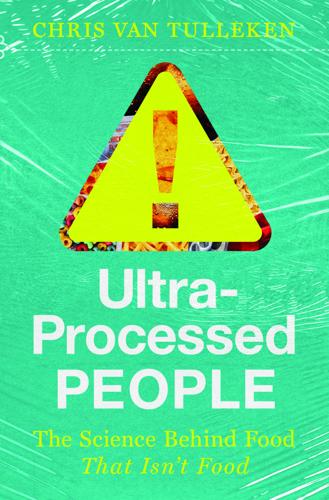
Ultra-Processed People: The Science Behind Food That Isn't Food
by
Chris van Tulleken
Published 26 Jun 2023
Ultimately, the gut started to leak so much that bacterial components could be detected in the mice’s bloodstreams. The types of bugs in the microbiome were affected, too, with reduced levels of Bacteroidales – bacteria typically associated with health – and increased levels of bacteria that break down mucus and cause inflammation. Bacteria like Helicobacter pylori, which is known to cause cancer and ulcers in humans, began to flourish. Overall, there was a reduction in diversity of the microbiome, which is one of the defining characteristics of health. Under the microscope the mouse guts were so inflamed that it looked as if they were developing colitis.
…
Abbott, 65, 179, 201, 296 ABC News, 101n Aboriginal Australians, 175 Accum, Frederick, 46 acetate, 88 Ad Hoc Joint Task Force, 65 Adane, Christina, 142–3 Addicted to Food (podcast), 168 Addicted to Food (Smith), 304 addiction, 9, 106, 151–68, 179, 206–7, 271, 303–4 additives, 208–21, 271, 272 regulation of, 225–33 ADHD (attention deficit hyperactivity disorder), 209 Advertising Association, 205n Advertising Standards Agency, 209 advertising, see marketing Africa, 246–7, 286 agriculture antibiotic resistance and, 266 meat production, 259–63 oil production, 258–9 Agyemang, Charles, 247 AIBMR Life Sciences, 233 Air Canada, 151 airline food, 151 alcohol, 9, 128n, 164, 166, 199 Aldi, 159, 160, 264 Algeria, 25 alginate, 22 allergic diseases, 216 Alliance for Potato Research and Education (APRE), 101n Alliance to Save our Antibiotics, 266 Allison, David, 100n Alpen, 52 Alzheimer’s disease, 62 Amazon, 264 Amazon region, 238–43, 248–9, 262, 263 American Academy of Paediatrics, 292 American Beverage Association, 101n American College of Sports Medicine, 133 American Journal of Clinical Nutrition,202 American Society for Nutrition, 65 Angola, 246, 286 anti-fat bias, 6 antibiotics, 216, 226, 230, 255, 266–7 antioxidant supplements, 47 anxiety, 156, 233 appetite regulation, 31, 34, 37, 41, 56–9, 104, 106–8, 160, 173 Apple, 140 Applebaum, Rhona, 133 apples, 171–2 Archer-Daniels-Midland (ADM), 240, 272, 277 Argentina, 262, 263 arms races, 1–4, 47, 74, 84, 86 arrowroot starch, 21 artificial colours, 205n artificial sweeteners, 5, 23, 90–91, 194n, 200–206, 209, 272 Asda, 159, 205n, 296 asthma, 214n, 216 astrology, 49–50 Atkins, Robert, 111, 116 atoms, 81 ATP (adenosine triphosphate), 82 Attia, Peter, 112 Auschwitz concentration camp, 73 Australasian Guideline, 292 Australia, 6, 80, 84, 140–41, 256 autoimmune diseases, 216 Avena, Nicole, 153–5, 167n, 168, 189 Awesome Chips, 140 baby food/formula, 93, 172n, 236, 274, 288–90 bacteria, 3, 4 butter and, 24 exudate, 22 first age of eating, 80–83 microbiome, 87–8, 155, 204, 213–21, 271, 272–3, 289 baked beans, 157–8 Ballarin, Oswaldo, 288, 289–90 Bank of England, 282 Barabási, Albert-László, 189 Barbosa, Felipe, 237 Barcarena, Brazil, 239–40, 265 BASF, 73 Batterham, Rachel, 35–7, 59, 61, 66, 145–6, 152 Bayer, 73 beef, 141–2, 189 farming of, 85–8, 92, 99, 190, 215, 260–61, 267, 274 protein isolates, 154 Belém, Brazil, 238, 248 Bellini, Alessandra, 297 BENEO, 65 Benin, 286 beriberi, 42 Berridge, Kent, 156n Bert, Paul, 103 beta-carotene, 47, 71 Bethesda, Maryland, 53 Better Food Index, 298 Biggest Loser, The, 54 Bilott, Rob, 212 Binley, Gary, 275 bisphenol A, 227 Bite Back, 297–8 bitter tastes, 194, 195, 196, 198–9 Black communities, 245–6 BlackRock, 282 bladder, 194n Blair, Steven, 122, 133, 134 blood fat profiles, 62 blood pressure, 109 blue whales, 102 Bluebell Capital, 282 BMI (body mass index), 50, 54, 138n, 242 body fat, 100–104 Bolton, Lizzie, 31 bones, 72, 85, 95–7, 175, 271 bonobos, 100 Boots, 296 Borneo, 259 Boston, Massachusetts, 139, 143 Boyland, Emma, 141 Boyle, Bob, 292 Bozer, Ahmet, 283 Brabeck-Letmathe, Peter, 284 Brazil, 6, 32, 41–5, 60, 75, 118, 157, 159, 236–43, 248–9 meat production in, 262, 263 plastic waste in, 268 soy industry, 239–40 traditional diet, displacement of, 43–4, 197–8, 236–49 bread, 173–4, 208–9 Break Free From Plastic, 267 breast cancer, 60, 62 breastfeeding, 42, 94–6, 130, 185, 187, 195, 214, 288–94 Brecon Beacons, Wales, 52 Bristol University, 25 British and Irish Legal Information Institute, 250 British Broadcasting Corporation (BBC), 53, 125, 139, 168 British Dietetic Association, 296 British Heart Foundation, 128, 296 British Journal of Nutrition, 75 British Medical Journal, 49, 60, 236 British Museum, London, 180 British Nutrition Foundation, 295 Broad Leib, Emily, 231, 233, 234, 243 Brochet, Frédéric, 182n Brown, Alan, 93 Brown, Amy, 293 Bunge Limited, 277 Burger King, 140, 173 Burkina Faso, 286 Burmese pythons, 88 butter, 24–7, 28n, 70–75 butyrate, 88 buy-one-get-one-free deals, 283 C-reactive protein, 160 Cabo Verde, 286 caesarean delivery, 214n caffeine, 198, 199 calcium, 85, 120, 191, 195 Caldwell, Carlyle ‘Corky’, 21 calories, 4–5, 38, 40, 92 artificial sweeteners, 23 energy-dense foods, 66, 176–7, 271, 301 exercise and, 122–36 regulation system, 102–8 restriction of, 54 UPF, 10, 11, 32, 36, 45, 48, 57, 58, 65–6, 72, 90 Cambridge University, 59, 107, 125, 252, 291 Cameroon, 286 Campbell Soup Company, 65 Canada, 6, 80, 106, 151 Cancer Research UK, 296 cancer, 6, 9, 45, 60, 189, 216, 218, 227, 232, 267 Cannon, Geoffrey, 119n canola oil, 28 Cant, Alasdair, 148, 167 Carb Killa, 154, 155 carbohydrates, 43, 109, 111–17 carbon dioxide, 80, 81, 260, 263, 272 carbon, 80, 81–2, 85 carbon-chain saturation, 24 carboxymethylcellulose, 211, 217–19, 302 cardiovascular disease, 61, 62, 137, 189, 231 Cargill, 142, 277, 295 Carmody, Rachel, 88–9 Carney, Mark, 282, 283 carnivores, 85 carotenoids, 188 Carr, Allen, 11, 153 carrageenan, 15, 22 cattle, 85–8, 92, 99, 190, 215, 274 Cell Metabolism, 34 cells, 1–3 cellulose, 87 Center for Science in the Public Interest, 112 Central African Republic, 286 Centre for Industrial Rheology, 23 Centre for Social Justice, 296 Centre for the Study of the Senses, 180 Cereal Partners Worldwide, 64 Chad, 286 Change4 Life, 205 Channel 4 News, 125 Chauvin, Derek, 245 cheese, 46 Cheeselets, 254 Cheetos, 299 chemotherapy, 267 chewing, 174–5, 177, 183, 272 chewing gum, 212 Chi-Med, 285 Chicago, Illinois, 93, 130 chicken, 261–2, 264 chicken nuggets, 159 Chile, 299 chimpanzees, 3, 46, 89n, 100 China, 61, 247, 268, 291 chlorine, 81n, 85 chlorine dioxide, 229 cholecystokinin, 105n Christianity, 101 Chukotka, Russia, 186n cigarettes, see smoking CIMMYT, 65 cinnamon, 185n Citigroup, 276 climate change, 6, 255–68, 272 Clooney, George, 290 Clostridium difficile, 221 coal, 69–75, 90 cobalt, 85 Coca-Cola, 101n, 120, 121, 158, 187, 198–202, 283–4 cocaine and, 198 plastic waste, 267–8 research funding, 133–6, 295, 296 sugar in, 198–202 cocaine, 164, 166, 198, 199 Coco Pops, 30–31, 37, 38–40, 48, 172, 173 cocoa mass, 31 coconut fat, 29 coconut palms, 258 cod liver oil, 97 Code, The, 290 Colloid and Polymer Science, 71 Columbian exchange, 255n Compass Group/Chartwells UK, 297 Compass, 296 Conagra, 295 conflicts of interest, 64, 132–6, 178–9 Congo region, 118, 286 constipation, 157 Co-operative Group, 159, 205n, 264 copper, 85 Cordara, Roderick, 252, 254 corn, 21, 118, 225–6, 228, 229–30, 273 Corn Oil ONE, 225–6, 228, 229–30 coronary thrombosis, 45 cortisol, 143 cost-of-living crisis (2022–), 17–18 Costa Coffee, 140, 217, 297, 301 Costa Ferreira, Paula, 241, 243 Costcutter, 205n Côte d’Ivoire, 286 cottonseed oil, 27, 28 Covid-19 pandemic, 147 cows, see cattle COZ corn oil, 225–6, 228, 229–30 Cranswick’s, Hull, 264 Crawley, Helen, 295 Cream o’ Galloway, 19 Creed, Greg, 247 Crisco, 28 Crohn’s disease, 62, 216, 219 Crunchy Nut Clusters, 52 cyclamate, 201 Da Costa Louzada, Maria, 159–60, 301, 303 damascenone, 188 dandruff, 90 Danone, 65, 179, 201, 281, 282, 286, 292, 295, 296, 297 DATEM, 208, 211–13, 302 Davis, Clara, 46, 93–9 De Graaf, Kees, 178 Death in the Pot (Accum), 46 death, 6, 7, 47, 62, 189 Degesch, 73 dehydration, 198 delayed gratification, 148–9 Deliveroo, 297 Deltas, 254 dementia, 7, 62, 189 Democratic Republic of the Congo, 286 Denmark, 191 Department for Environment, Food & Rural Affairs (UK), 124, 132 Department of Agriculture (US), 112, 189 depression, 62, 132, 227, 233 Deutsche Fettsäure Werke, 70 diabetes, 35, 62, 110, 198, 201–4, 216, 218, 220, 227, 241 Diabetes UK, 296 diacetyl, 70–71 Diagnostic and Statistical Manual of Mental Disorders, 164 diamorphine, 164 Dicken, Sam, 59–64, 66, 152 Dickinsonia costata, 83–4 diet experiments Hall, 55–9, 66, 175–6 Taubes, 112–15 van Tulleken, 35–7, 66, 102, 152–63 digestion ponds, 212 dimethylpolysiloxane, 244 diphosphates, 151 DNA (deoxyribonucleic acid), 2–3, 85 dogs, 184–5 dolphins, 197 Domino’s Pizza, 247n dopamine, 105n, 156n Dorito Effect, The (Schatzker), 187 Doritos, 52, 251, 254 dose-dependent effects, 60 doubly labelled water sub-studies, 126–7, 129–30 Dr Pepper, 299 dreams, 156 dryness, 176 Duke University, 129 DuPont, 212–13, 229 Dusty Knuckle Potato Sourdough, 174 dysbiosis, 216–17, 234 dyspepsia, 62 E numbers, 210, 211, 244 Easy Way to Stop Smoking, The (Carr), 11, 153 eating, 4, 76, 79–99 first age of, 76, 79–83 second age of, 83–90, 100 third age of, 90–99, 108 emotional problems and, 147 instinct, 92–99 speed of, 177–8 Ebersole, Kara, 130 ecstasy, 68 edamame, 240, 261 Ediacara Hills, South Australia, 84 Edmonton, Alberta, 106 Egypt, ancient, 101 electrons, 82 elephants, 100 emulsifiers, 15, 17, 18, 19, 36, 154, 155, 160, 211 microbiome and, 217–19, 271, 272–3 endocrine system, 104, 108, 131, 272 Endres, John, 233 energy density, 66, 176–7, 271, 301 Eno, 285 Environmental Protection Agency (US), 212 environmental, social and governance (ESG), 278, 282 enzymes, 25, 26, 27n, 81n, 85, 86, 89 epilepsy, 116 Equatorial Guinea, 286 European Food Information Council, 66 European Journal of Clinical Nutrition, 113 European Union (EU), 210, 233–4 Evonik Industries, 73 exercise, 122–36 Exercise is Medicine campaign, 133, 134, 136 Faber, Emmanuel, 282 Fahlberg, Constantin, 90 Fanta, 299 Fardet, Anthony, 171 Farooqi, Sadaf, 107 fats, 24–9, 43 hydrogenation, 26–7, 33, 231, 246 RBD (Refined, Bleached & Deodorized), 28–9 weight gain and, 110 fatty acids, 188–9 fatty liver disease, 62 feedback systems, 104, 108 Feingold, Ben, 209 FermaSure XL, 229 fertilisers, 257 fertility, 27, 131, 155, 227, 230, 233, 272 fibre, 55, 57, 60, 87, 155, 157, 171, 189, 215 Fidelity, 281 Finland, 175 First Steps Nutrition, 205, 295 fish oil, 47 Fisher, Franz, 69 Fitness Industry Association, 205n Five Guys, 140 fizzy drinks, 120–21 Flavor and Extract Manufacturers Association (FEMA) 232 flavour; flavouring, 180–92, 193–207 enhancers, 193–4, 209–10 Fletcher, Paul, 163 Flössner, Otto, 71–2, 75 Floyd, George, 245 fluorine, 81n, 85 Food Additives Amendment (US, 1958), 227 Food and Drug Administration (US), 210, 225–32 food deserts/swamps, 139–40, 142–4 Food Foundation, 17–18 food matrix, 171, 191, 271 Food Standards Agency (UK), 40n, 210, 292 food waste, 128 FooDB database, 189 Forde, Ciarán, 64–5, 178–9 ‘forever chemicals’, 212 frailty, 62 France, 17, 60 free school meals, 142 Freeze Pops, 15 fried chicken, 245 Friedman, Milton, 282 Froneri, 279–81 Frosties, 299–300 fruit, 183 concentrate, 157 Gabon, 286 Galilei, Galileo, 109, 117 Gambia, 286 garlic, 189 Gearhardt, Ashley, 165 General Mills, 65 generally recognized as safe (GRAS), 228, 229, 230, 232 genes; genome, 1–3, 126, 138, 144–5, 147, 148, 177 Germany, 17, 68–75, 90–91 Ghana, 246–7, 286 ghrelin, 105n Gibney, Mike, 64 gingerbread men, 251 Global Energy Balance Network, 123, 133 glucose, 15, 31 glutamate, 193, 195 glycerine, 17, 18 ‘Good Cook, The’ (Olney), 44 Google, 140 Gordon, Aubrey, 50n Göring, Hermann, 71 gossypol, 27 Greece, ancient, 101 Greenland, 80 Greenpeace, 298 Greggs, 140, 302 Grenade, 154, 155 Grocer, The, 151 Growing Up in Singapore, 177 GSK, 285 Gü, 156n guanylate, 193, 195, 196 guar gum, 15, 17, 19, 22 Guardian, 245 Guinea, 286 Guinea Bissau, 286 gums, 15, 17, 18, 19, 22, 23, 220, 272 Hackney Gelato, 15, 16 Hadean period, 79–80 Hadza people, 129–32 haem iron, 192 Haleon, 285 Hall, Kevin, 32, 34, 35, 51, 53–9, 60, 63, 106–7, 113, 168, 172 diet experiments, 55–9, 66, 175–6 Haribo, 52 Harper’s Weekly, 28n Hart, Paul, 16–29, 33, 66–7, 154, 188, 189, 206, 275–6 Harvard University, 88, 109, 114, 116, 159, 175, 231 Harvest Frost, MV, 240 heart disease, see cardiovascular disease Heath, Allister, 125 heavy water, 127 hedonic overdrive, 107 height, 8, 191 Heinz, 23, 158 Helicobacter pylori, 218 Hellmann’s, 23, 36 Henderson, Earl, 94–8 Henkel, Hugo, 70 herbicides, 257 herbivores, 85–8 heroin, 164, 199 Hershey, 295 Hervey, G. R., 103 hexane, 261 HFSS, 39–40 high blood pressure, 62 high-fructose corn syrup, 118, 273 Hill, James, 122, 133, 134 Hippenstiel-Imhausen, Jürgen, 68–9, 74 His Majesty’s Revenue and Customs (HMRC), 250–55 Hitler, Adolf, 71 HIV (human immunodeficiency viruses), 1, 50, 228, 230 Hoechst, 73 ‘hog lagoons’, 266 Holliday, Richard ‘Doc’, 190 homeostasis, 103–8 Homo erectus, 89n honey, 118 Hovis, 174 Hubbard, Lucius, 28n Hughes, Paul, 180–81 hunger hormone, 105n hunter-gatherer societies, 100, 118, 129, 132, 220 hydrogen, 85 hydrogenation, 26–7, 33, 231, 246 hydrolysis, 33, 240 hyper-processing, 178, 272 hypothalamus, 103–4, 105n ice cream, 15–20, 22, 29, 181–2, 217, 265, 275–6, 279–81 Iceland, 267 IG Farben, 70–74 Imhausen, Arthur, 69–74 Imhausen, Karl-Heinz, 73 Imhausen-Chemie, 68–74 immune deficiencies, 214n Imperial College London, 292 India, 101, 268, 291 Indonesia, 29, 258, 259, 291 infant formula, 236, 288–94 inflammation, 37, 160, 216, 218–20, 227, 271 inflammatory bowel disease, 7, 62, 214n, 216, 219–20 Innocent, 297 inosinate, 193, 195 Institute for Economic Affairs, 124 Institute for Fiscal Studies, 124n insulin, 37, 111–17, 172, 194n, 202 International Life Sciences Institute, 202 International Maize and Wheat Improvement Center, 65 International Monetary Fund (IMF), 259 iodine, 42, 85 iron, 38, 42, 80–81, 83, 85, 190n, 237 irritable bowel syndrome, 62 isoeugenol, 232 Italian cuisine, 197–8 Italy, 17 JAB Holding Company, 209 Jacobs, David, 47, 192 Jaffa Cakes, 251 Jamie Oliver Group, 264, 297, 298–9 Japanese Society of Allergology, 292 jaws, 174–5 Jelliffe, Derrick and Patrice, 288–90 Jenny Craig, 284 J.M.
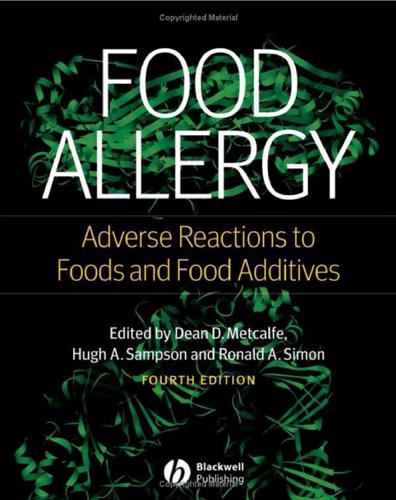
Food Allergy: Adverse Reactions to Foods and Food Additives
by
Dean D. Metcalfe
Published 15 Dec 2008
Distribution of Peyer’s patches in the distal ileum. Inflamm Bowel Dis 2002;8:180–5. 37 Abreu MT, Fukata M, Arditi M. TLR signaling in the gut in health and disease. J Immunol 2005;174:4453–60. 38 Nordenstedt H, Nilsson M, Johnsen R, et al. Helicobacter pylori infection and gastroesophageal reflux in a population-based study (The HUNT Study). Helicobacter 2007;12:16–22. 39 Figura N, Perrone A, Gennari C, et al. CagA-positive Helicobacter pylori infection may increase the risk of food allergy development. J Physiol Pharmacol 1999;50:827–31. 40. Zuckerman MJ, Watts MT, Bhatt BD, Ho H. Intestinal permeability to [51Cr]EDTA in infectious diarrhea.
…
Table 15.4 Differential diagnosis of eosinophilic gastroenteritis Celiac disease Chronic granulomatous disease Connective tissue diseases/vasculitis Systemic lupus erythematosus Scleroderma Dermatomyositis Polymyositis Churg–Strauss syndrome Polyarteritis nodosa Others Food allergies Hypereosinophilic syndrome Infectious Ancylostoma caninium (hookworm) Anisakis Ascaris EBV Enterobius vermicularis (pinworm) Eustoma rotundatum Giardia lambila Helicobacter pylori Schistosomiasis trichus Stercoalis Strongyloides Toxocara canis Trichinella spiralis Others Inflammatory bowel disease* Inflammatory fibroid polyp Malignancy Medications Azathioprine Carbamazepine Clofazimine Enalapril Gemfibrozil Gold Others [40,41] Note this list is not exhaustive – case reports of other etiologies have been reported.
…
Laboratory evaluation In contrast to EoE, peripheral eosinophilia or an elevated IgE level occurs in approximately 70% of affected individuals [76]. Allergic investigation is the same as for patients with EoE, however it is less often revealing. Infectious work-up should include stool ova and parasite testing on three separate stool samples, serum (and possibly tissue) EBV PCR, giardia antigen, and Helicobacter pylori testing [77–82]. Rheumatologic testing should be considered in the appropriate clinical context [83,84]. Measures of absorptive activity such as the D-xylose absorption test and lactose hydrogen breath testing may reveal evidence of malabsorption, reflecting small intestinal damage. Inflammatory bowel disease serologies may also be considered, but with the recognition that they have limited sensitivity especially in younger children [85,86].
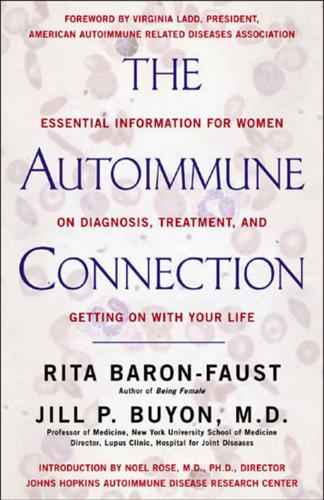
The Autoimmune Connection
by
Rita Baron-Faust
and
Jill Buyon
Published 21 Apr 2003
Those “hits” could include viral or bacterial infections, such as Epstein-Barr virus (EBV ), which causes infectious mononucleosis. Suspect bacteria include streptococci, responsible for rheumatic fever; salmonella, a cause of food poisoning; Escherichia coli, responsible for urinary tract infections; Helicobacter pylori, which causes gastrointestinal ulcers; and Borrelia burgdorferi, the corkscrew-shaped bacterium carried by ticks that causes Lyme disease. Lyme disease triggers inflammation around the body and can cause an arthritis similar to RA (in fact, it’s often misdiagnosed as rheumatoid arthritis). As many as 10 percent of people who’ve had a salmonella infection also develop a temporary, “reactive” form of arthritis, and a smaller number develop a more lingering and debilitating arthritis.
…
The fact that some cases of ITP are caused by drugs, occur after a virus, or worsen after a viral infection may mean that there are environmental triggers. ITP has been associated with Lyme disease, cytomegalovirus, Epstein-Barr virus (EBV, infectious mononucleosis), mycoplasmal pneumonia, hepatitis C, and the ulcer-causing bacteria Helicobacter pylori. “There are infections that you don’t completely clear that are associated with ITP. When you suppress them, it makes the thrombocytopenia better. For example, antiviral therapy boosts platelet counts in people with ITP with HIV-related thrombocytopenia or in hepatitis C,” says hematologist James B.
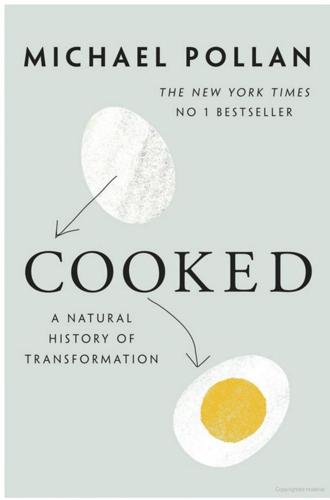
Cooked: A Natural History of Transformation
by
Michael Pollan
Published 22 Apr 2013
Possibly: The researchers found that when they transferred bacteria from the gut of fat mice into germ-free mice, the germ-free mice gained nearly twice as much weight as when they received gut bacteria from skinny mice.* Other research has found that specific gut microbes, such as Helicobacter pylori, play a role in regulating the hormones that control appetite. Could it be possible that the microbiota also affects mental function and mood, as some of the fermentos I met in Freestone claimed? The idea no longer seems preposterous. A recent study performed in Ireland found that introducing a certain probiotic species found in some fermented foods (Lactobacillus rhamnosus JB-1) to the diet of mice had a measurable effect on their stress levels and mood, altering the levels of certain neurotransmitters in the brain.† Precisely how the presence of a certain bacterium in the gut might affect mental function is unclear, yet the researchers found they could block the effect by severing the vagus nerve that links the gut to the brain.
…
(Flöistrup, H., et al., “Allergic Disease and Sensitization in Steiner School Children,” Journal of Allergy and Clinical Immunology 117 [2006]: 59–66.) * Blaser, Martin,. “Antibiotic Overuse: Stop the Killing of Beneficial Bacteria,” Nature 476 (2011): 393–94. † Consider the saga of the once-common stomach bacteria Helicobacter pylori. Long considered the pathogen responsible for causing peptic ulcers, the bacterium was routinely attacked with antibiotics, and as a result has become rare—today, less than 10 percent of American children test positive for H. pylori. Only recently have researchers discovered it also plays a positive role in our health: H.
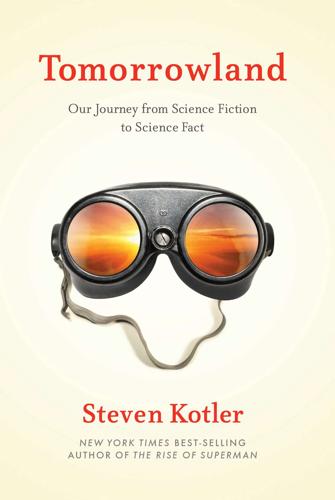
Tomorrowland: Our Journey From Science Fiction to Science Fact
by
Steven Kotler
Published 11 May 2015
Over the years, iGEM teams have not only pushed technical barriers but creative ones as well, turning bacterial cells into everything from photographic films to hemoglobin-producing blood cells to miniature hard drives, complete with data encryption. By 2008, students were designing organisms with real-world applications; the contest that year was won by a team from Slovenia for their designer vaccine against Helicobacter pylori, the bacteria responsible for most ulcers. The 2011 grand prize winner, a team from the University of Washington, completed three separate projects, each one rivaling the outputs of world-class academics and the biopharmaceutical industry. As the sophistication of iGEM research rose, so did the level of participation.
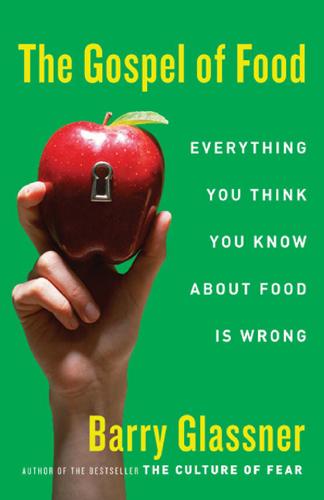
The Gospel of Food: Everything You Think You Know About Food Is Wrong
by
Barry Glassner
Published 15 Feb 2007
Karin Michels and Alicja Wolk, “A Prospective Study of Variety of Healthy Foods and Mortality in Women,” International Journal of Epidemiology 31 (2002): 847–54. 46. See, for example, Tone Bjorge et al., “Human Papillomavirus Infection as a Risk Factor for Anal and Perianal Skin Cancer in a Prospective Study,” British Journal of Cancer 87 (2002): 61–64; Jose Maria Pajares, “Helicobacter Pylori Infection and Gastric Cancer in Spain,” Hepato-Gastroenterology 48 (2001): 1556–59; Li Li, Emmanuel Messas, et al., “Porphyromonas Gingivalis Infection Accelerates the Progression of Atherosclerosis in a Heterozygous Apolipoprotein E-Deficient Murine Model,” Circulation 105 (2002): 861–67; J.
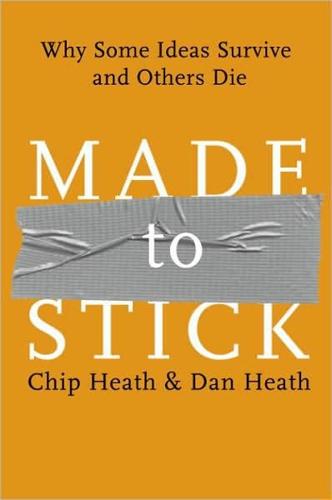
Made to Stick: Why Some Ideas Survive and Others Die
by
Chip Heath
and
Dan Heath
Published 18 Dec 2006
Ulcer treatments traditionally focused on mitigating the painful symptoms, since there was no clear way to “cure” an ulcer. In the early 1980s, two medical researchers from Perth, Australia, made an astonishing discovery: Ulcers are caused by bacteria. The researchers, Barry Marshall and Robin Warren, identified a tiny spiral-shaped type of bacteria as the culprit. (It would later be named Helicobacter pylori, or H. pylori.) The significance of this discovery was enormous: If ulcers were caused by bacteria, they could be cured. In fact, they could be cured within a matter of days by a simple treatment with antibiotics. The medical world, however, did not rejoice. There were no celebrations for Marshall and Warren, who had almost single-handedly improved the health prospects of several hundred million human beings.
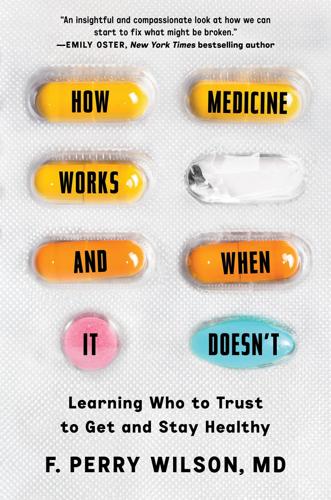
How Medicine Works and When It Doesn't: Learning Who to Trust to Get and Stay Healthy
by
F. Perry Wilson
Published 24 Jan 2023
We may all end up on the wrong side of a fact-check in the future. If, writing prior to 1984, you’d suggested that gastric ulcers were caused by a bacteria rather than psychological stress, a fact-check would have labeled you incorrect. It was in that year that doctors Barry Marshall and Robin Warren published their finding that Helicobacter pylori was the true cause of gastric ulcers (and the reason they are treated with antibiotics today). They were awarded the Nobel Prize for this discovery in 2005. Censorship is not the key to fixing the medical misinformation ecosystem (which goes hand in hand with all the other misinformation out there).
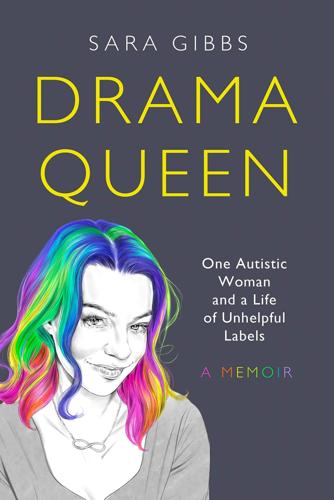
Drama Queen: One Autistic Woman and a Life of Unhelpful Labels
by
Sara Gibbs
Published 23 Jun 2021
‘Now they’ll look like they were made by the same idiot.’ It was around that time that my dad started dropping hints about his health. He texted me that his stomach wasn’t feeling too hot. He was trying some new vitamins his cousin in Israel had sent to him. They were testing him at the doctor for Helicobacter pylori – or maybe an ulcer. He didn’t go into details about his symptoms, but something felt very wrong. Eventually, under great duress and far too late, my dad agreed to go for an endoscopy. By this point it was late July, just weeks before the big day and his weight had dropped dramatically. He looked ill.
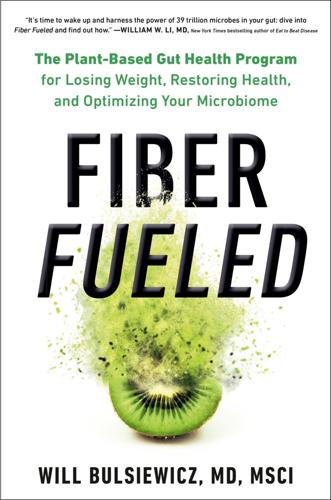
Fiber Fueled: The Plant-Based Gut Health Program for Losing Weight, Restoring Your Health, and Optimizing Your Microbiome
by
Will Bulsiewicz
Published 15 Dec 2020
When it comes to fermented veggies, the main concern has been stomach cancer. Epidemiologic studies from East Asia have found an association between stomach cancer and pickled vegetable consumption. Stomach cancer is a huge problem in East Asia, where it is the second most common cancer. Most cases are the result of Helicobacter pylori, a carcinogenic bacteria that lives in the stomach of 60 to 70 percent of Japanese and Koreans. Still, only a fraction of colonized individuals develop stomach cancer. So where do fermented veggies fit in? It turns out that salt and its by-products actually accelerate the inflammation and cancer development in the stomach lining.
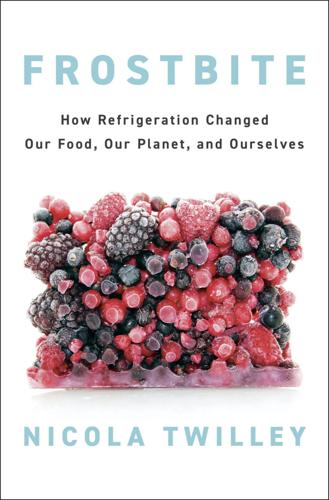
Frostbite: How Refrigeration Changed Our Food, Our Planet, and Ourselves
by
Nicola Twilley
Published 24 Jun 2024
Not all is doom and gloom, however. One of the key ways refrigeration has been shown to affect consumption patterns, and thus our health, is by reducing our dependence on salt as a preservative—which, in turn, has been credited with a dramatic reduction in rates of stomach cancer. (High dietary salt intake combines with Helicobacter pylori, a microbe that experts estimate one in two of us carries in our guts, to increase the risk of gastric cancers.) Until the 1930s, this was the deadliest cancer in the US; it’s now not even in the top ten, in what epidemiologist Ernst L. Wynder called “an unplanned triumph” for public health.

Culture and Prosperity: The Truth About Markets - Why Some Nations Are Rich but Most Remain Poor
by
John Kay
Published 24 May 2004
A blockbuster drug typically relieves, but does not cure, common chronic illnesses such as depression or hypertension. But these drugs are not the only way to treat stomach acidity. Two Australian physicians, Robin Warren and Barry Marshall, discovered that many ulcers were caused by a bacterium, Helicobacter pylori) which could be eliminated by an intensive program of widely { 274} John Kay available antibiotics. Chemical substances are patentable. Treatment protocols are not. Warren and Marshall's rewards for their discovery have been limited to academic kudos and the gratitude of patients. 17 The Disney corporation is primarily a vehicle for the exploitation of the intellectual property created by its founder, Walt.
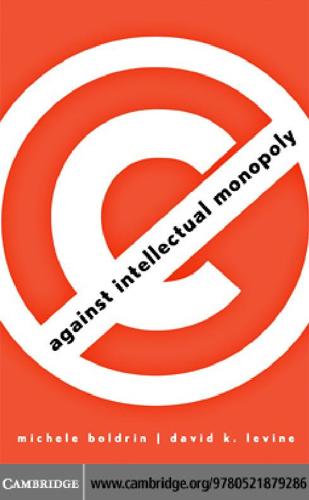
Against Intellectual Monopoly
by
Michele Boldrin
and
David K. Levine
Published 6 Jul 2008
Centers for Disease Control and Prevention: a top-ten list of public health achievements of the twentieth century in the United States. How do medical patents score on this one? A nice and round zero. The editor of the BMJ, recognizing the intrinsic arbitrariness of any top-N list, somewhere in the editorial presentation names her three beloved ones among the excluded: “Where are aspirin, Helicobacter pylori, and Med-line?” Good point, and we ask, Do they owe anything to patents? Not a chance. Even if one tries to stack the odds in favor of patents as much as possible, the bottom line changes only slightly. To do this we went to the Web site of Chemical and Engineering News magazine,31 where a “List of Top Pharmaceuticals,” divided by therapeutic categories, can be found.32 These were the pharmaceutical products selling the most worldwide at the time of the survey (2005), and there are forty-six of them.
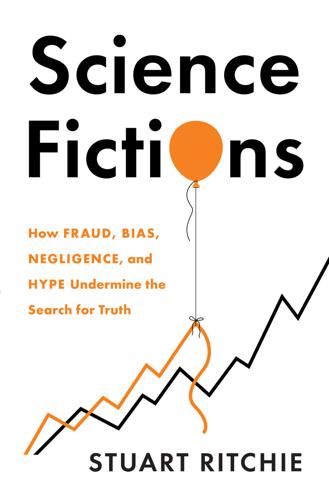
Science Fictions: How Fraud, Bias, Negligence, and Hype Undermine the Search for Truth
by
Stuart Ritchie
Published 20 Jul 2020
Autism: Stefano Bibbò et al., ‘Fecal Microbiota Transplantation: Past, Present and Future Perspectives’, Minerva Gastroenterologica e Dietologica, no. 4 (Sept. 2017): pp. 420–30; https://doi.org/10.23736/S1121-421X.17.02374-1 77. I may have used the word ‘cause’ in that sentence, but the causal status of many claims about the microbiome is far from clear. See Kate E. Lynch et al., ‘How Causal Are Microbiomes? A Comparison with the Helicobacter Pylori Explanation of Ulcers’, Biology & Philosophy 34, no. 6 (Dec. 2019): 62; https://doi.org/10.1007/s10539-019-9702-2 78. It shouldn’t escape our notice that the prospect of a link between gut health and autism was already raised by Andrew Wakefield, as discussed in Chapter 3. We’re a million miles from being certain whether the microbiome differences cause autism or are caused by it – for example, by the fact that autistic people often have more restricted diets. 79.
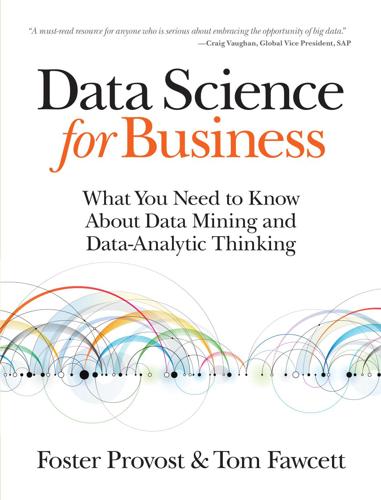
Data Science for Business: What You Need to Know About Data Mining and Data-Analytic Thinking
by
Foster Provost
and
Tom Fawcett
Published 30 Jun 2013
This diagram shows a global phylogeny (taxonomy) of fully sequenced genomes, automatically reconstructed by Francesca Ciccarelli and colleagues (2006). The center is the “last universal ancestor” of all life on earth, from which branch the three domains of life (eukaryota, bacteria, and archaea). Figure 6-8 shows a magnified portion of this tree containing the particular bacterium Helicobacter pylori, which causes ulcers. Figure 6-7. The phylogenetic Tree of Life, a huge hierarchical clustering of species, displayed radially. Figure 6-8. A portion of the Tree of Life. Returning to our example from the outset of the chapter, the top of Figure 6-9 shows, as a dendrogram, the 50 single malt Scotch whiskeys clustered using the methodology described by Lapointe and Legendre (1994).
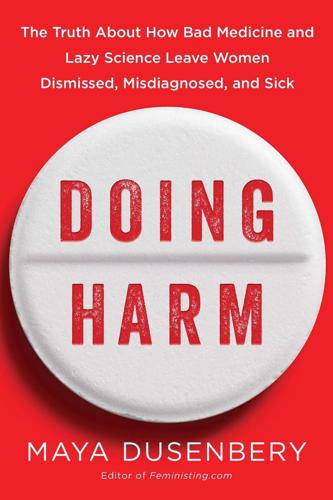
Doing Harm: The Truth About How Bad Medicine and Lazy Science Leave Women Dismissed, Misdiagnosed, and Sick
by
Maya Dusenbery
Published 6 Mar 2018
As Susan Sontag argued in her famous 1978 book Illness as Metaphor, psychological theories of illness “are always an index of how much is not understood about the physical terrain of a disease.” (The field suffered a blow to its reputation when stomach ulcers, long believed to be caused by stress, were linked to the bacteria Helicobacter pylori.) And despite the more narrow definition of psychosomatic used by experts in the specialty, in general medicine—as well as in popular culture—it often came to be used as a synonym of psychogenic (having its origin in the mind) in contrast to organic (having its origin in bodily organs). Another euphemism for hysterical.
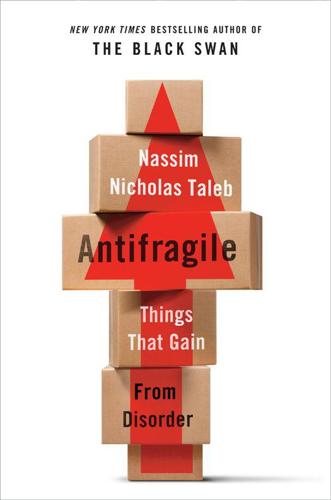
Antifragile: Things That Gain From Disorder
by
Nassim Nicholas Taleb
Published 27 Nov 2012
G., 1999, “Falling Forward: Real Options Reasoning and Entrepreneurial Failure.” Academy of Management Review: 13–30. McKnight, Scot, 2009, Fasting. Thomas Nelson. McMahon, Darrin M., 2001, Enemies of the Enlightenment: The French Counter-Enlightenment and the Making of Modernity. Oxford: Oxford University Press. Mégraud, F., and H. Lamouliatte, 1992, “Helicobacter pylori and Duodenal Ulcer.” Digestive Diseases and Sciences 37(5): 769–772. Mehta, R., R. J. Zhu, et al., 2012, “Is Noise Always Bad? Exploring the Effects of Ambient Noise on Creative Cognition.” Meisenzahl, R., and J. Mokyr, 2011, The Rate and Direction of Invention in the British Industrial Revolution: Incentives and Institutions.

Never Bet Against Occam: Mast Cell Activation Disease and the Modern Epidemics of Chronic Illness and Medical Complexity
by
Lawrence B. Afrin M. D.
,
Kendra Neilsen Myles
and
Kristi Posival
Published 15 Jan 2016
Also, just because a patient has a high level of any particular autoantibody doesn’t necessarily mean the patient has the disease that’s classically associated with that autoantibody. Helices “Heel´-ih-seez.” This word generically means a spiral, but it is more specifically used to refer either to the spiral shapes taken by strands of DNA or to the external portions of the ear that feature spiral-like ridges of tissue. Helicobacter pylori “Heel´-ih-coh-bac´-ter pī-lor´-ee,” frequently abbreviated to just “H. pylori.” This is a particular, common species of bacteria which can cause various diseases in humans including stomach and duodenal ulcer disease and immune thrombocytopenic purpura (ITP). When somebody has chronic epigastric pain and an EGD is done to examine the stomach from inside, many times a biopsy will be done which will show inflammation, and because H. pylori so commonly is the cause of such inflammation, special pathology testing will be done to try to see if H. pylori is present in the tissue.
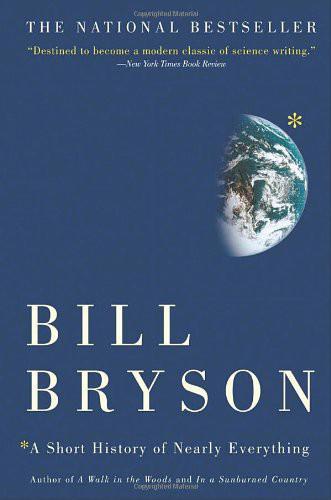
A Short History of Nearly Everything
by
Bill Bryson
Published 5 May 2003
Our carelessness is all the more alarming since the discovery that many other ailments may be bacterial in origin. The process of discovery began in 1983 when Barry Marshall, a doctor in Perth, Western Australia, found that many stomach cancers and most stomach ulcers are caused by a bacterium called Helicobacter pylori. Even though his findings were easily tested, the notion was so radical that more than a decade would pass before they were generally accepted. America's National Institutes of Health, for instance, didn't officially endorse the idea until 1994. “Hundreds, even thousands of people must have died from ulcers who wouldn't have,” Marshall told a reporter from Forbes in 1999.
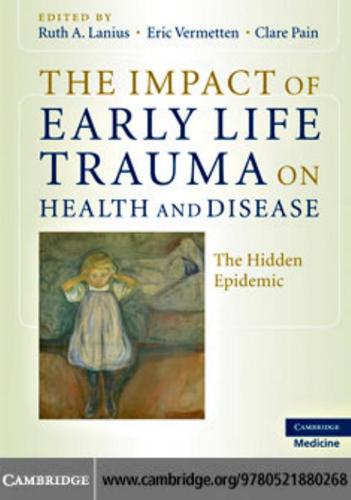
The Impact of Early Life Trauma on Health and Disease
by
Lanius, Ruth A.; Vermetten, Eric; Pain, Clare
Published 11 Jan 2011
Interestingly, both groups argue that repression is unlikely to be the mechanism behind accurate recovered memory, with some of the more vociferous critics being psychoanalytic writers who believe that the concept has been misapplied in the debate [35,36]. Mechanism evidence is discussed in Chs. 4 and 27 of this volume. Here it is simply noted that the evidence for or against the viability of a mechanism in the laboratory has little bearing on whether the phenomenon itself exists. That is, if we were to find tomorrow that Helicobacter pylori is not in fact important in causing ulcers, no one would argue that medical professionals should then decide that ulcers themselves are nonexistent. Similarly, although the question of whether traumatic amnesia can be caused by repression is interesting and relevant, the answer to the question does not decide the issue of the validity of recovered memory.

Growth: From Microorganisms to Megacities
by
Vaclav Smil
Published 23 Sep 2019
Perhaps most intriguingly, Beard and Blaser (2002) have suggested that the human microbial environment played a substantial role in determining the increase of average human height during the 20th century. Its change has included both exogenous and indigenous biota (now the much-researched human microbiome), and particularly microbial transmission of Helicobacter pylori in childhood. The recent slowdown of this secular increase (especially among better-off population groups) indicates that we have become increasingly specific pathogen-free. We do not have as much historical information on changing body weights as we do on growth in height. Skeletal studies of hominins and early humans yielded two general, and opposite, trends, while the modern, and virtually universal, body mass trend is obvious even without any studies.